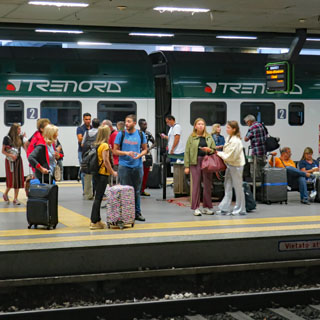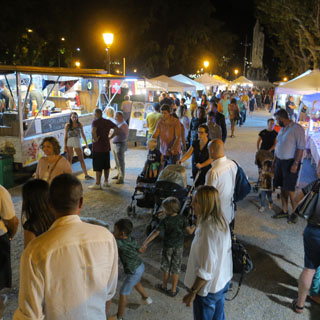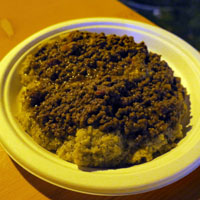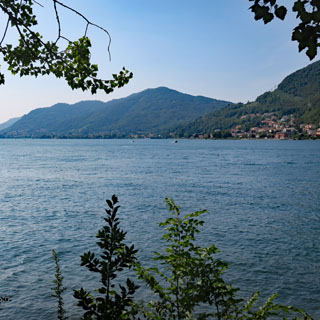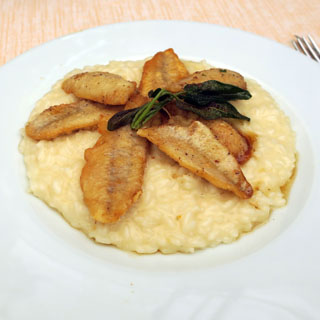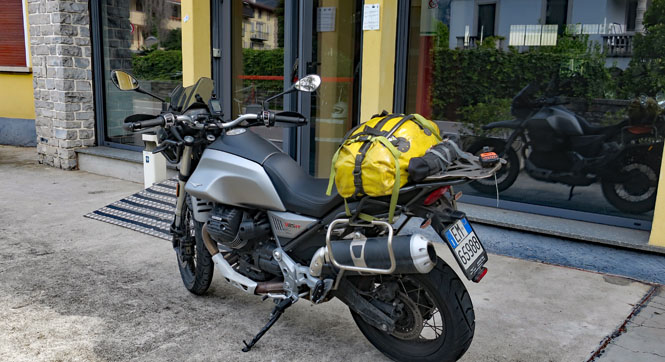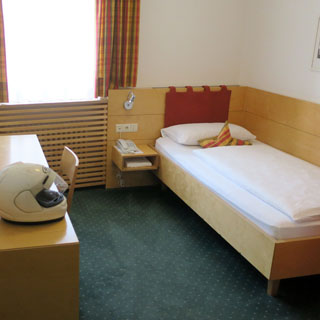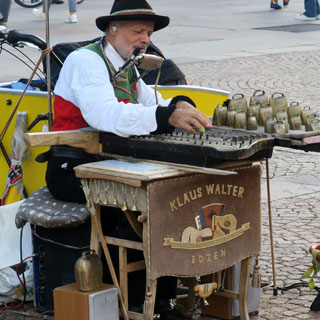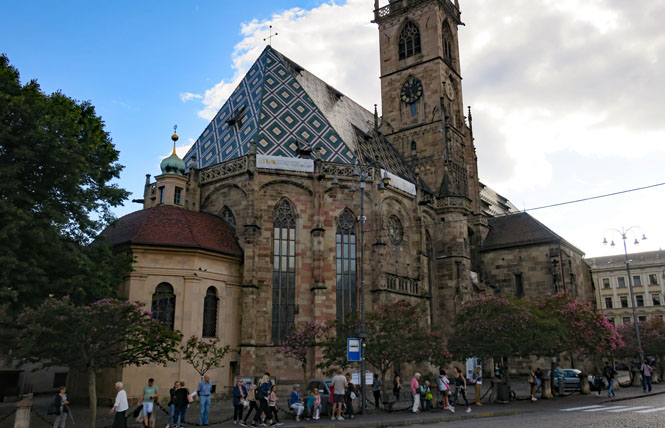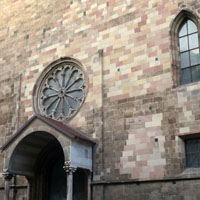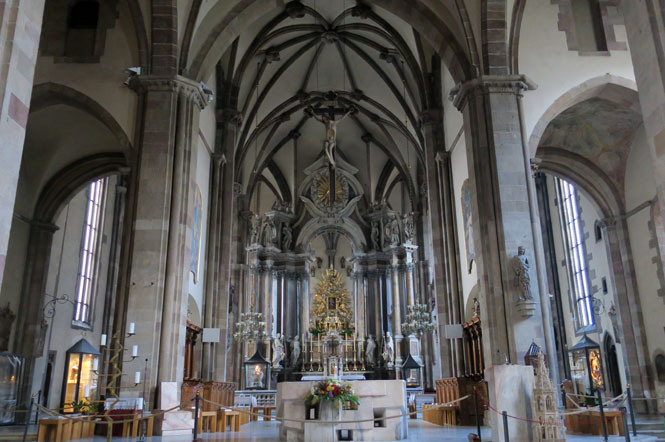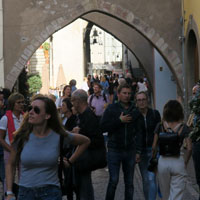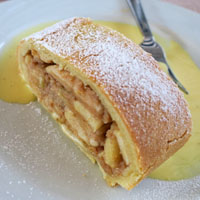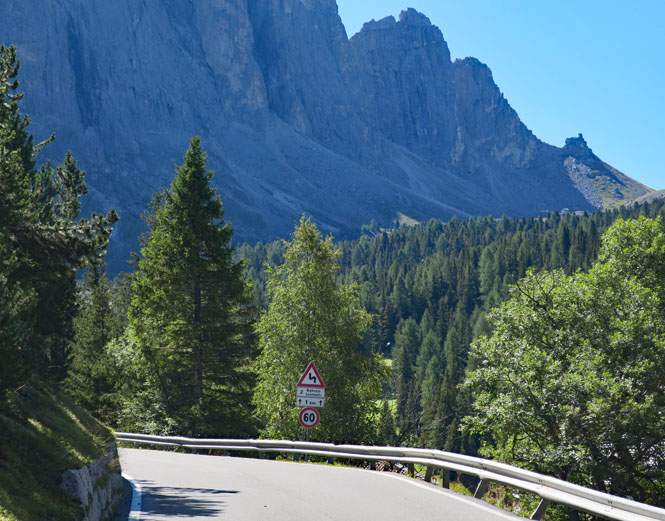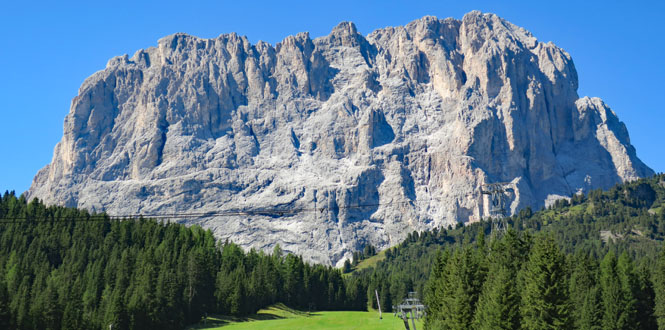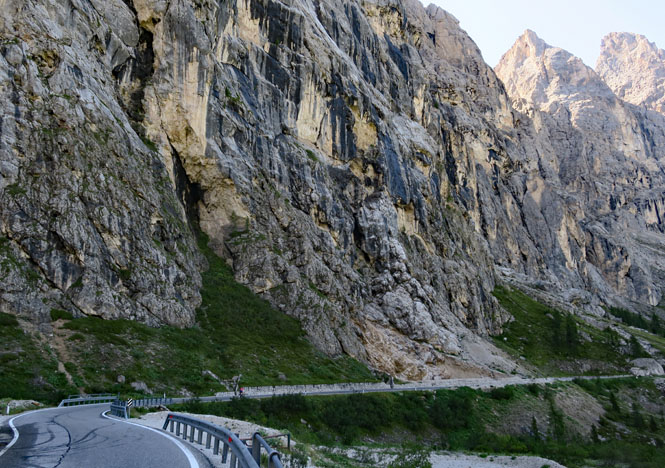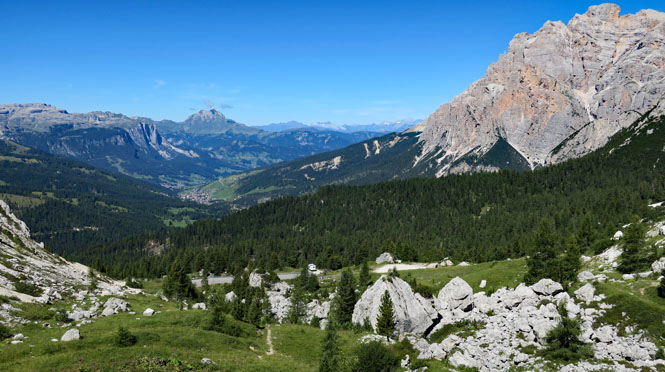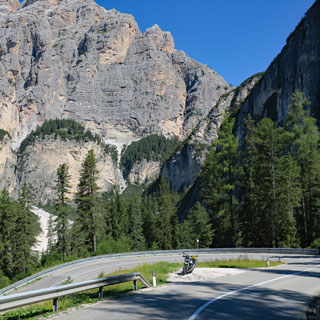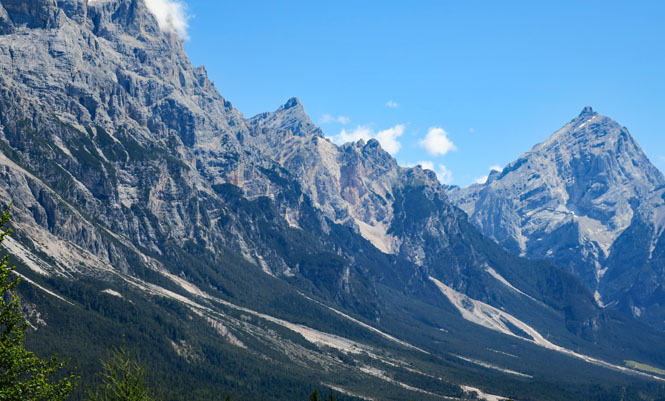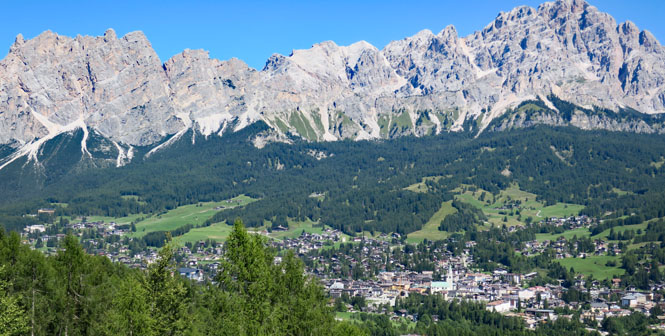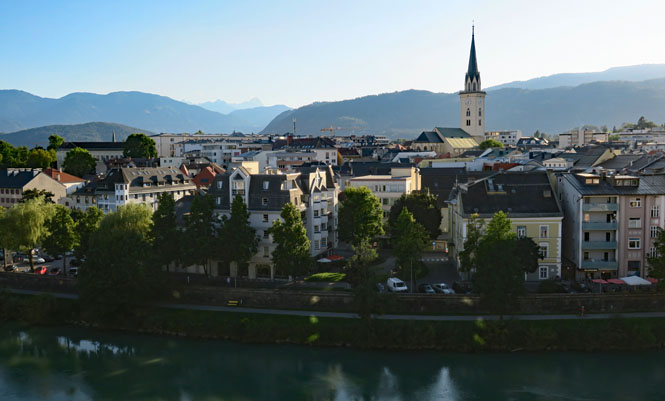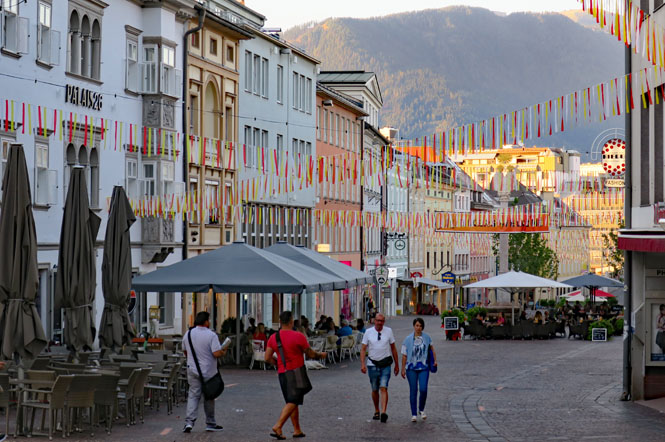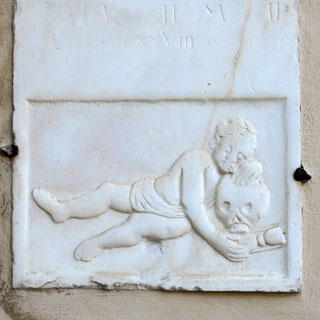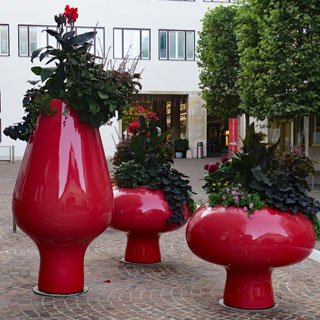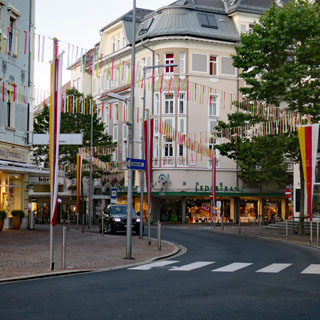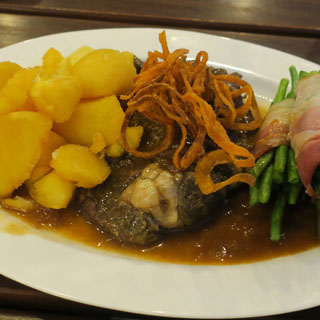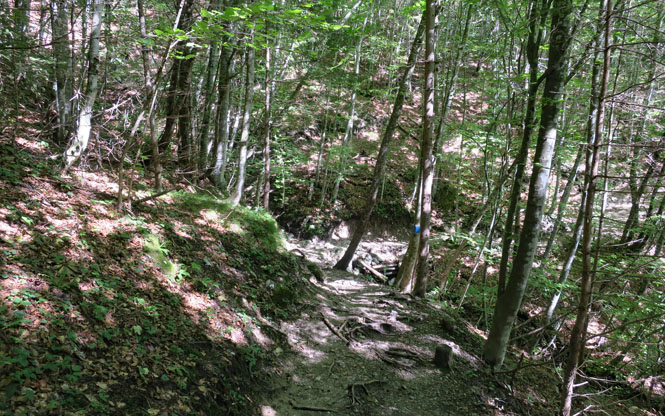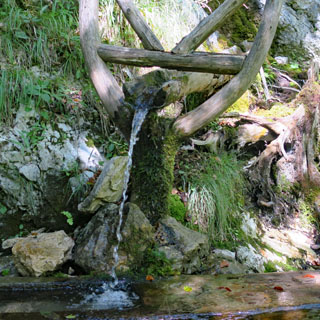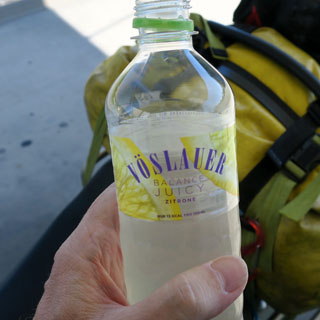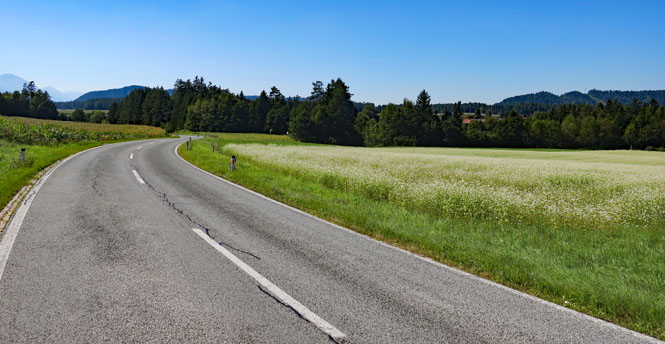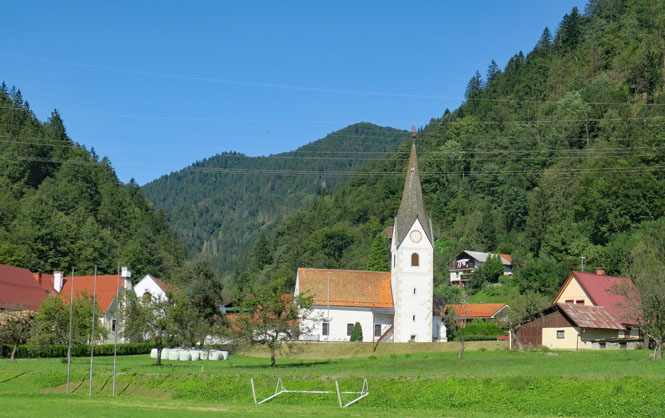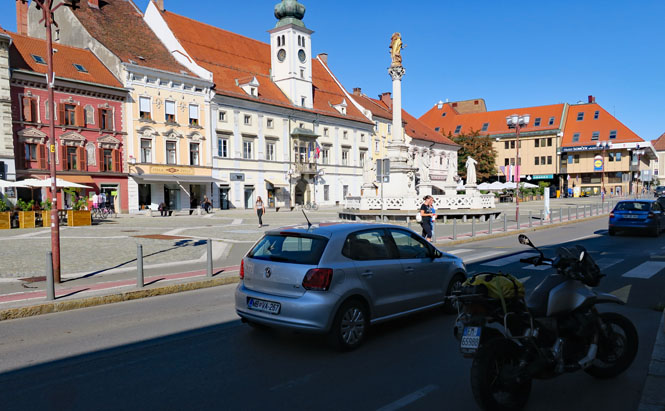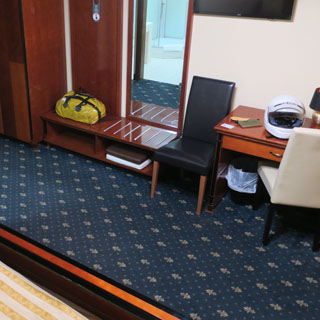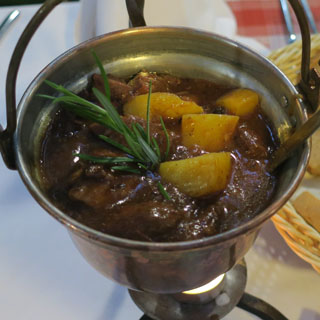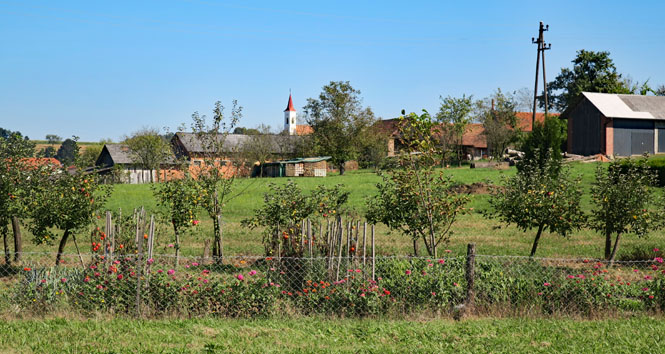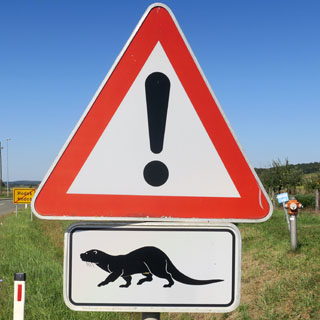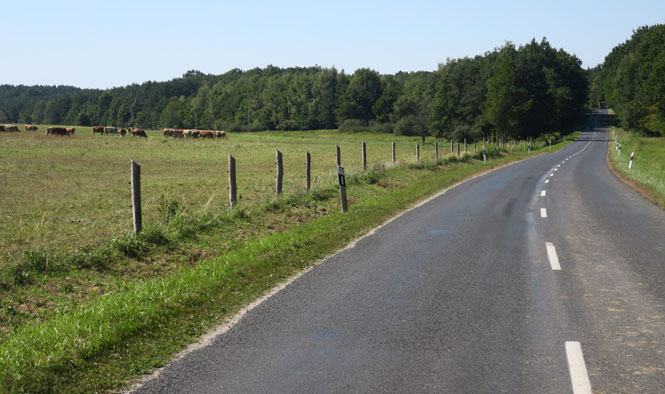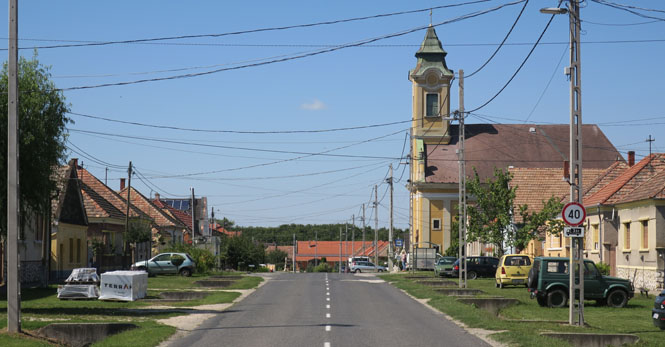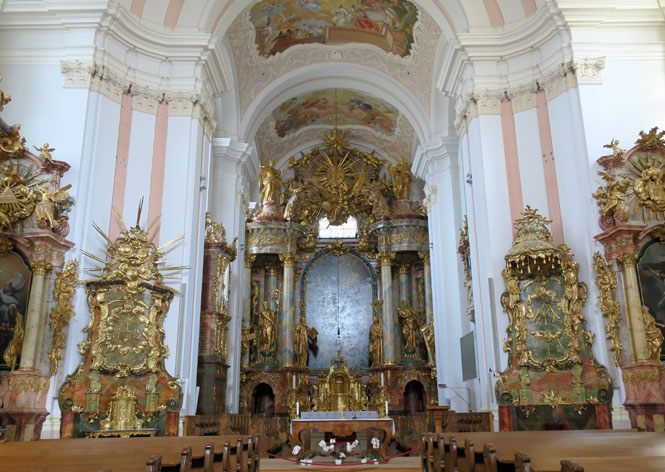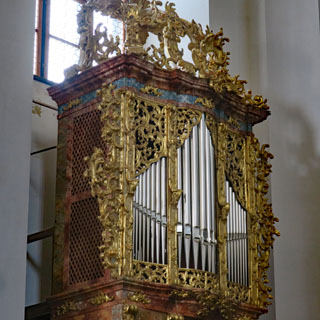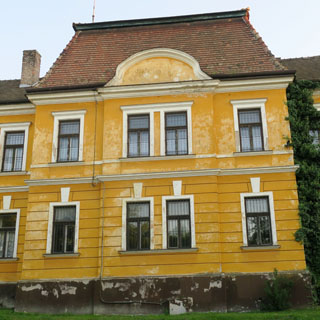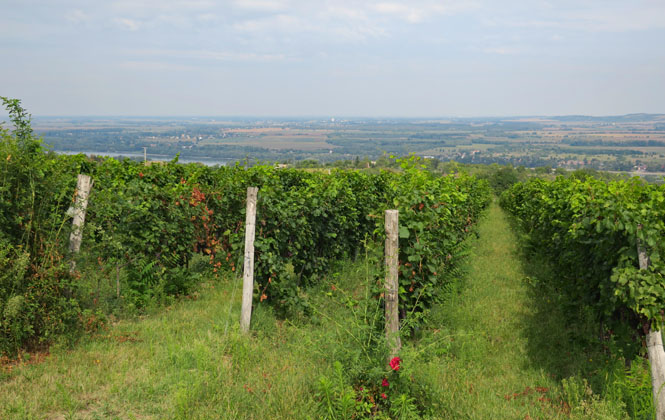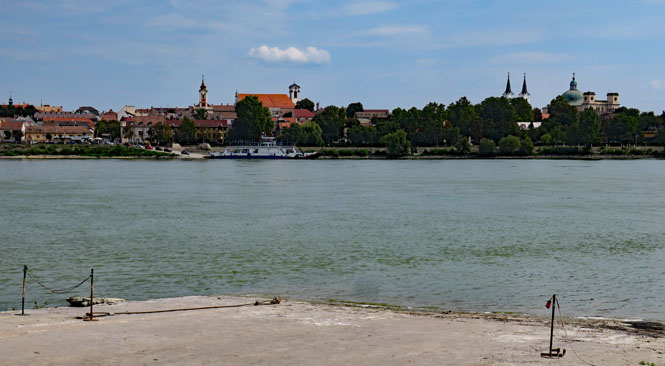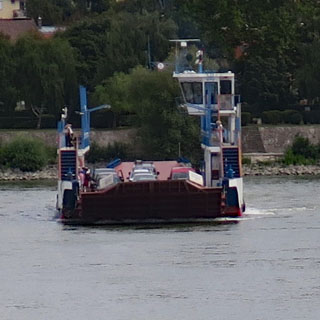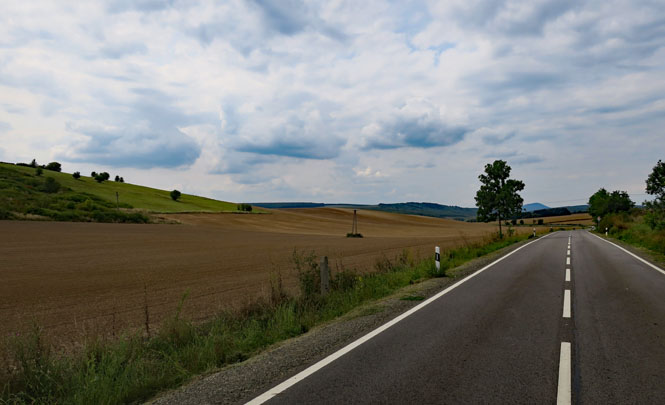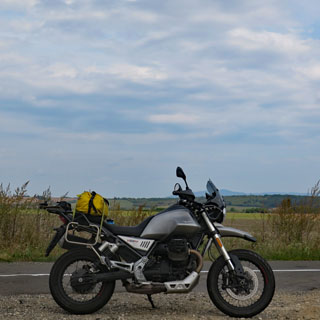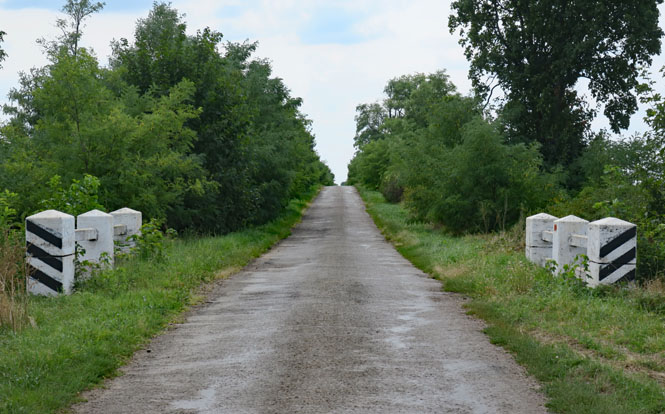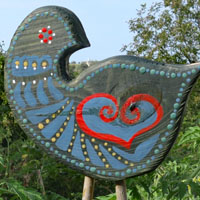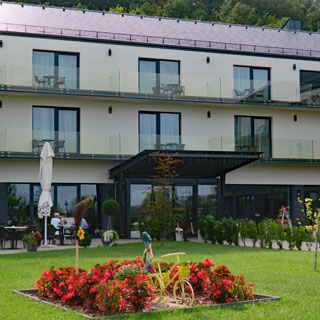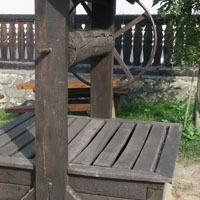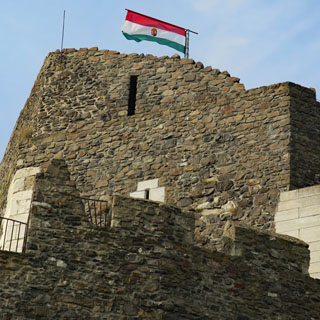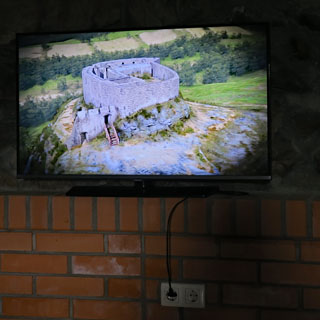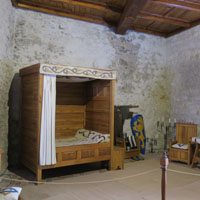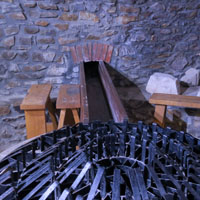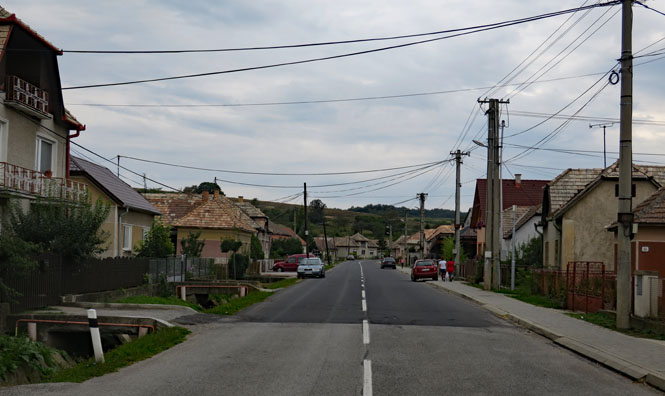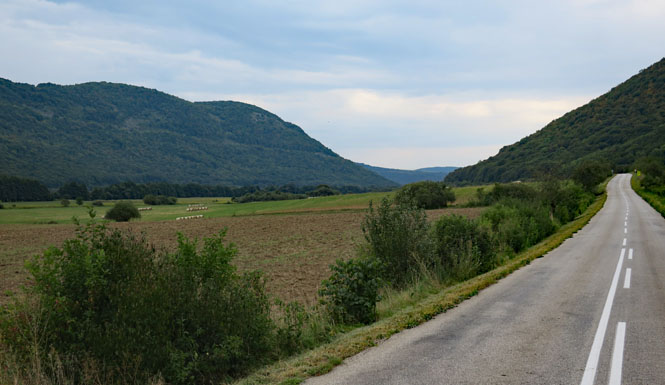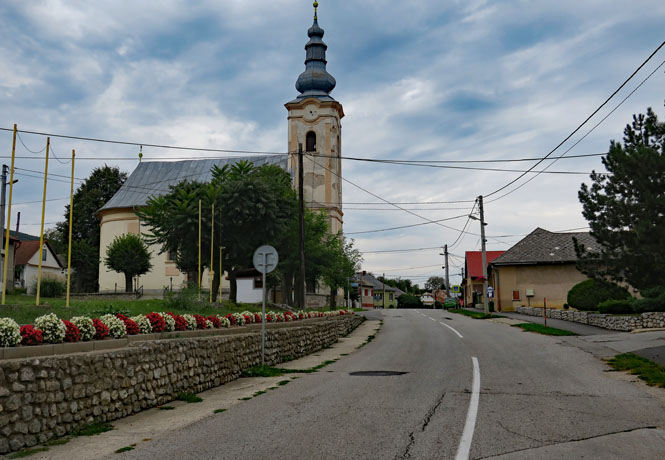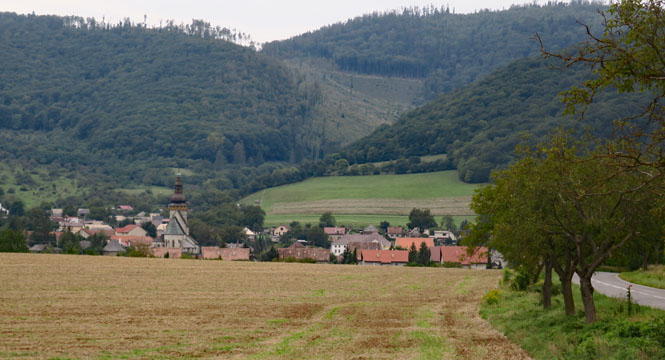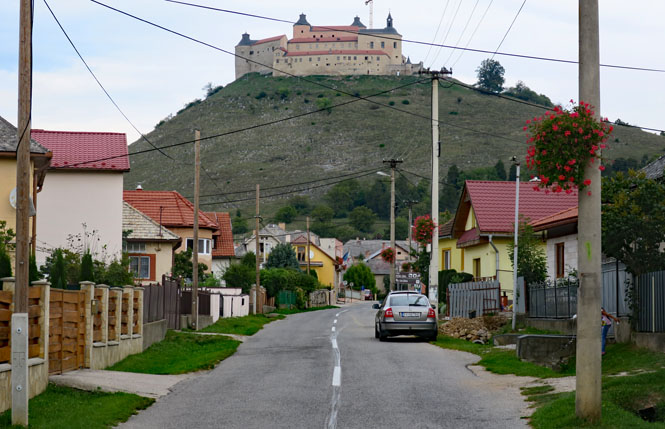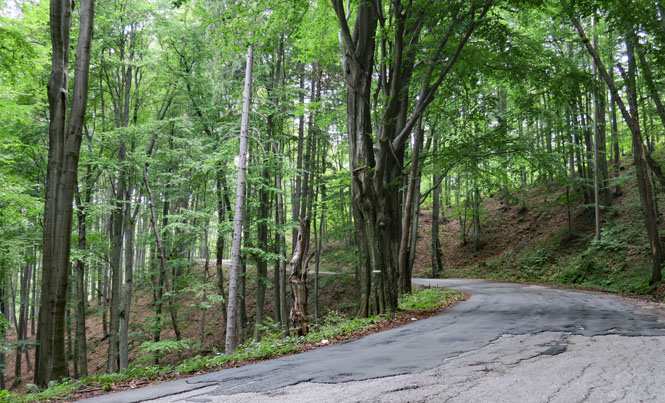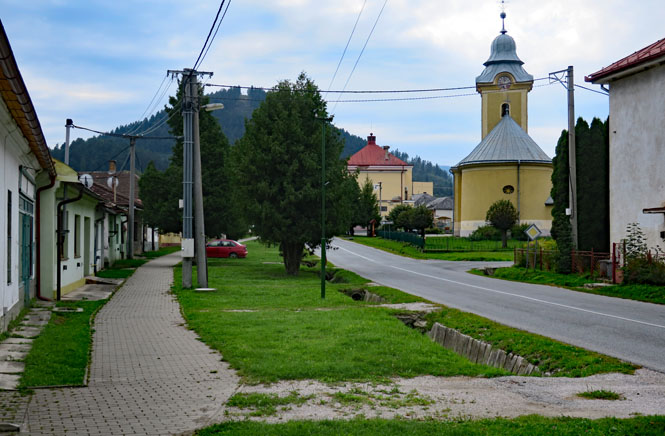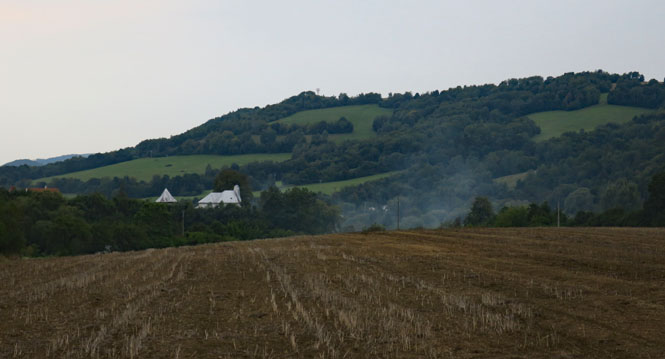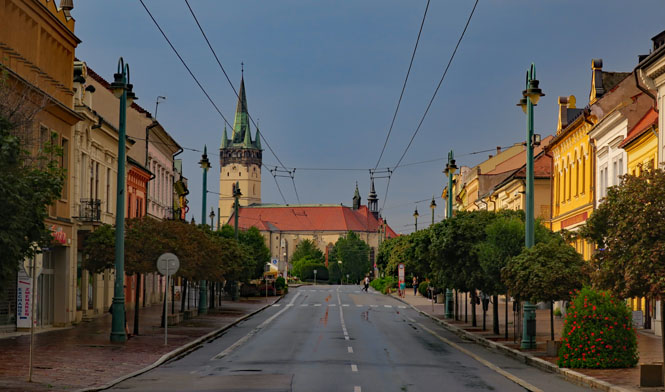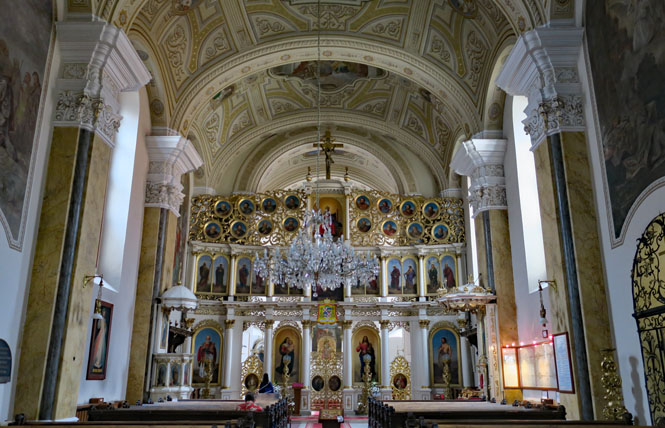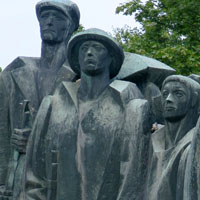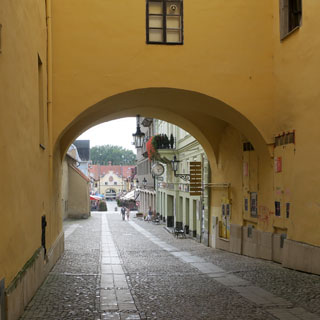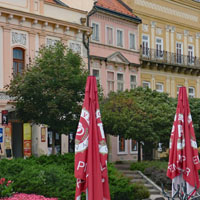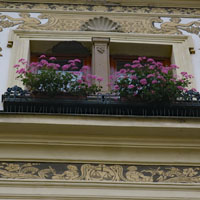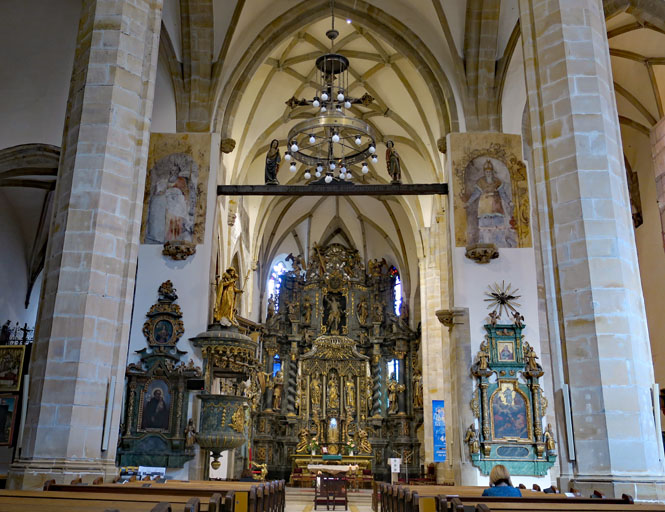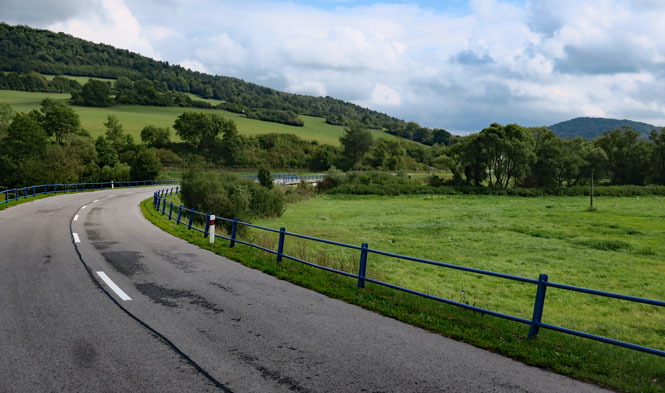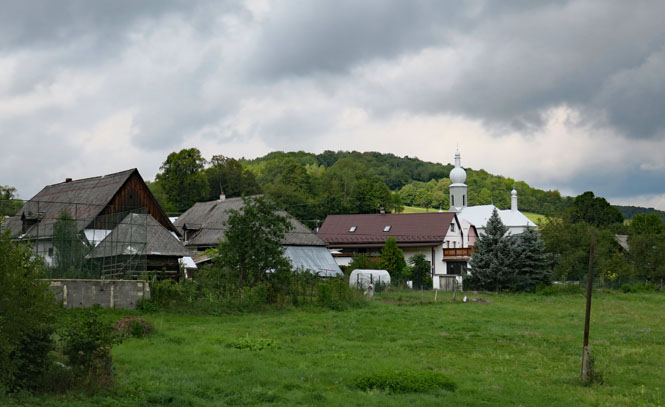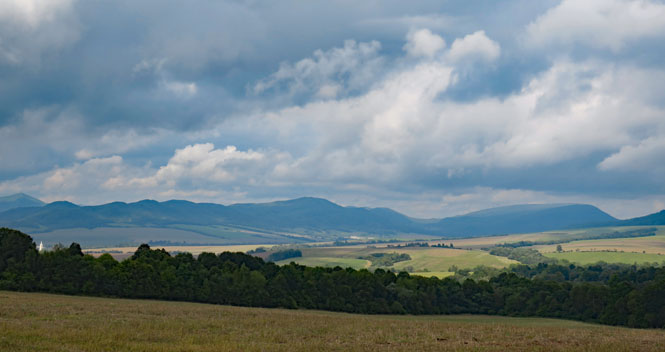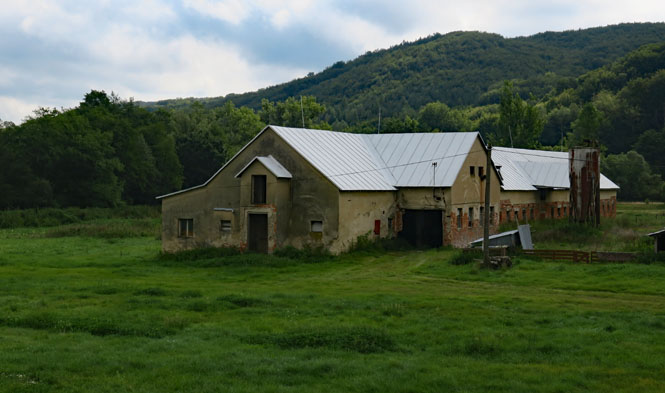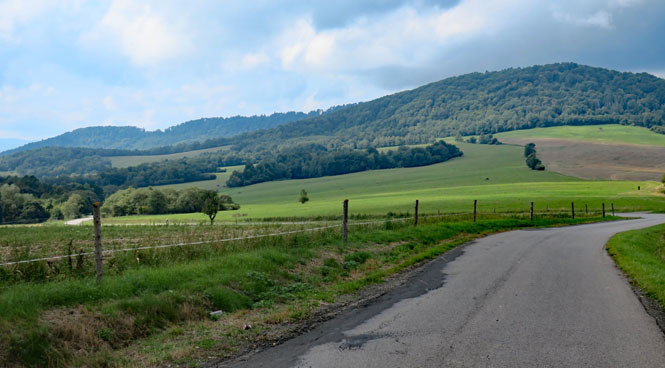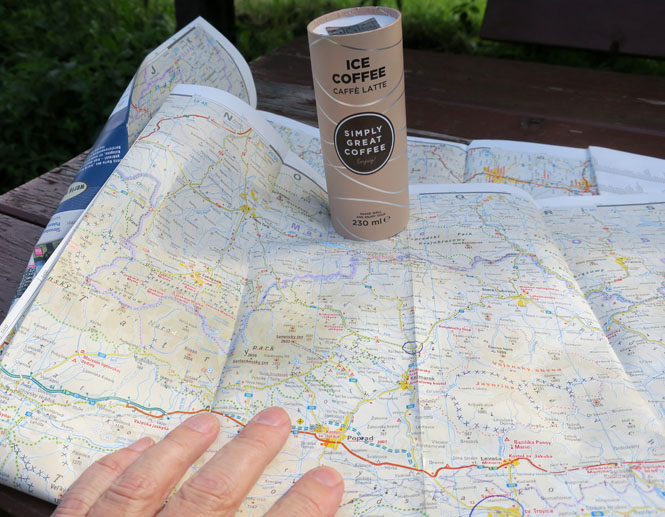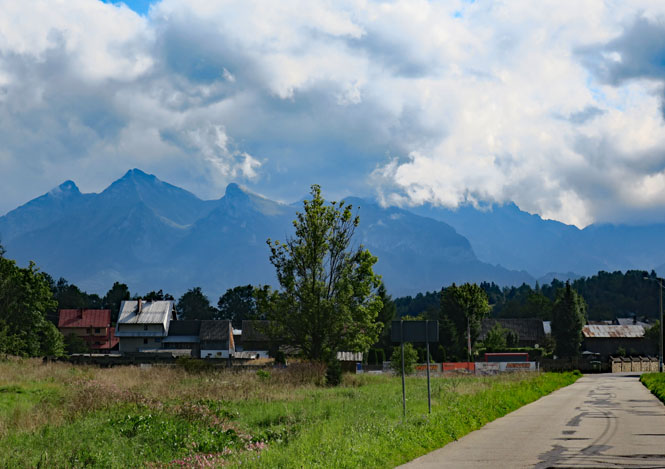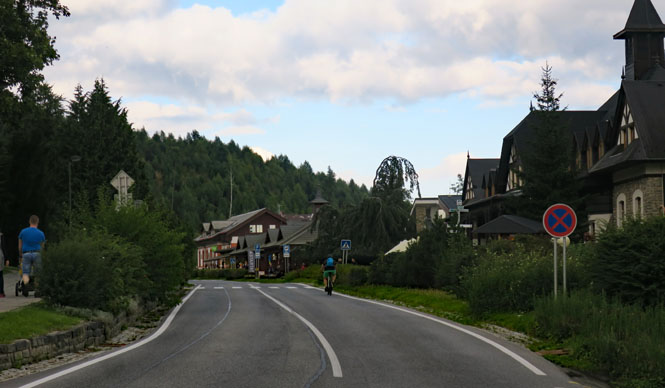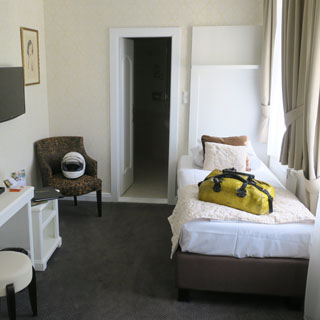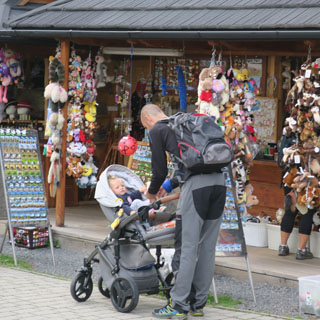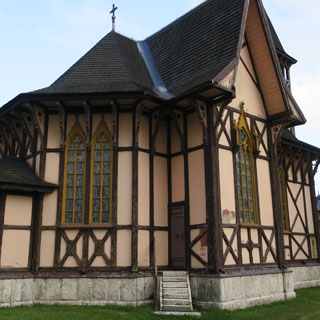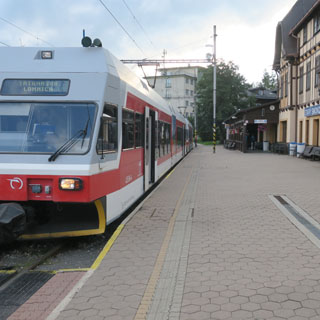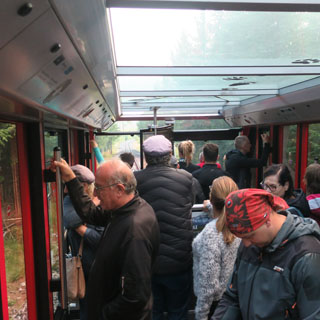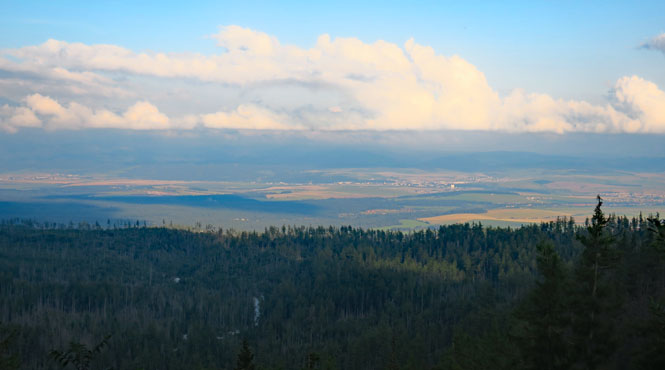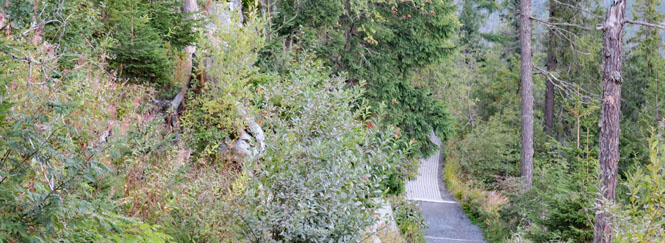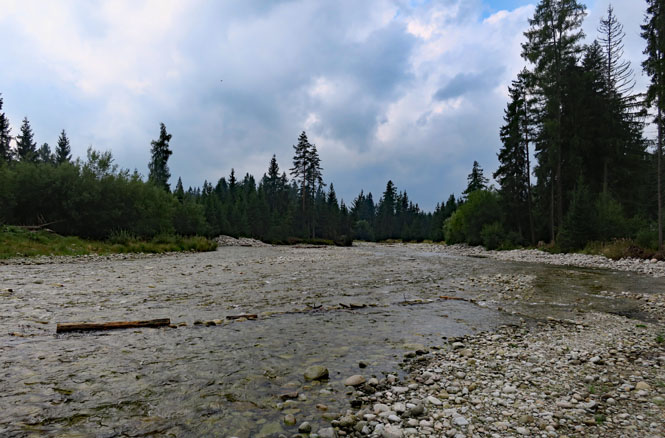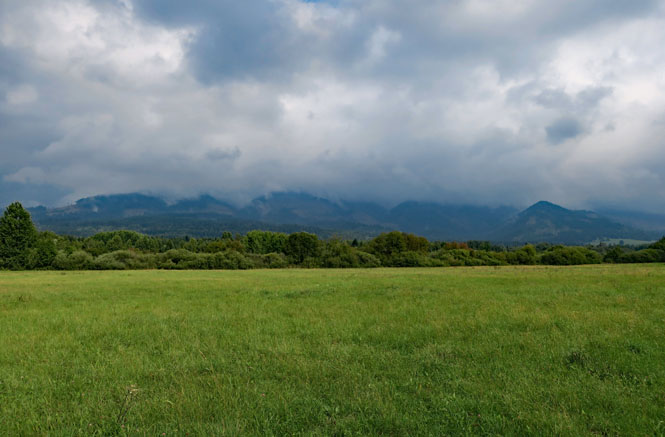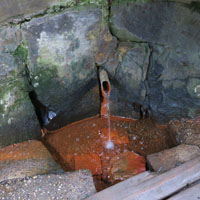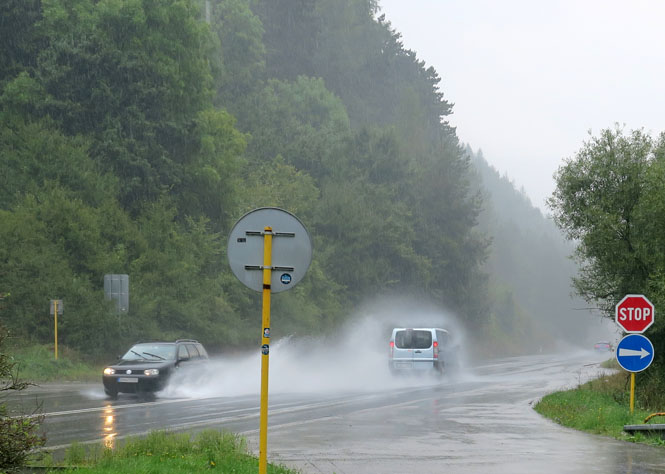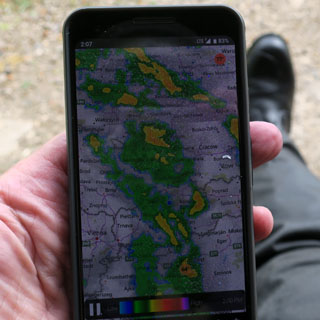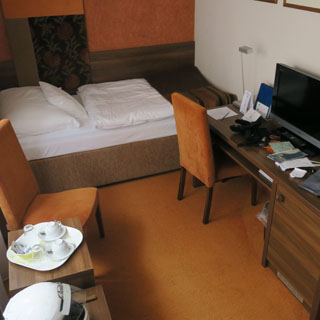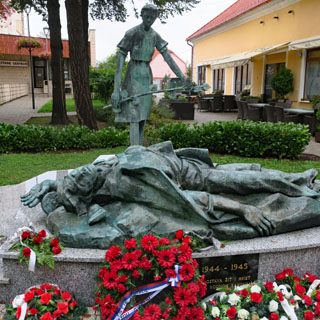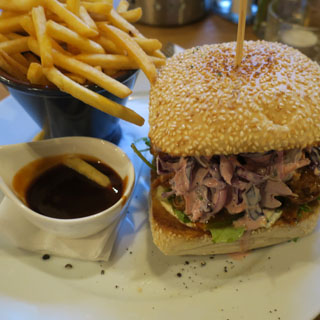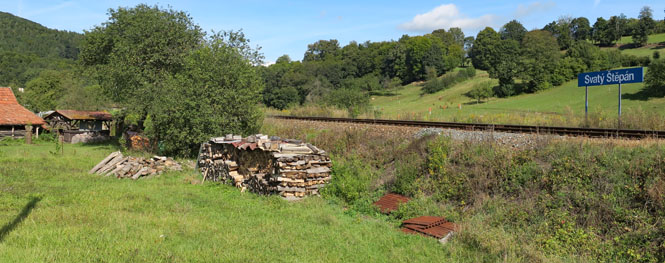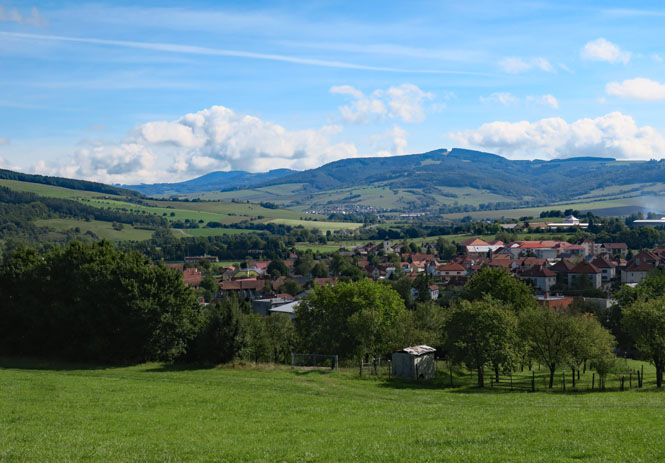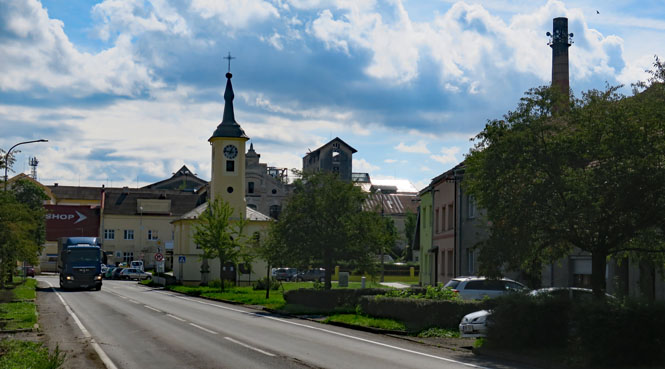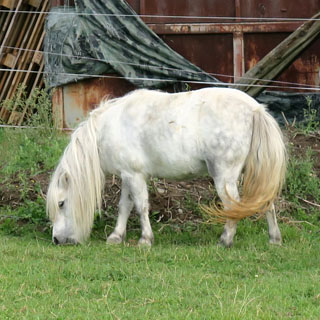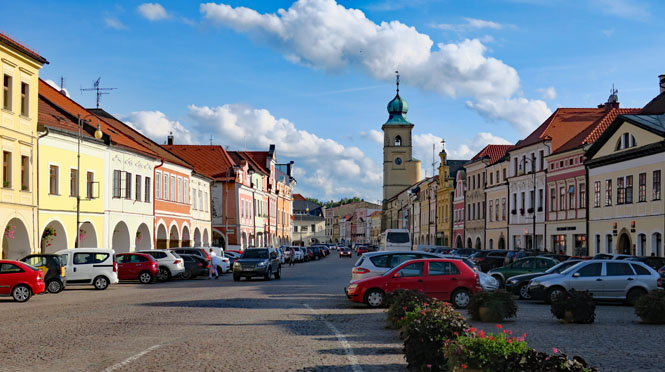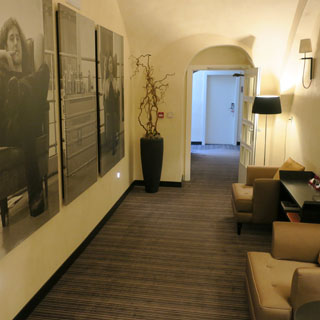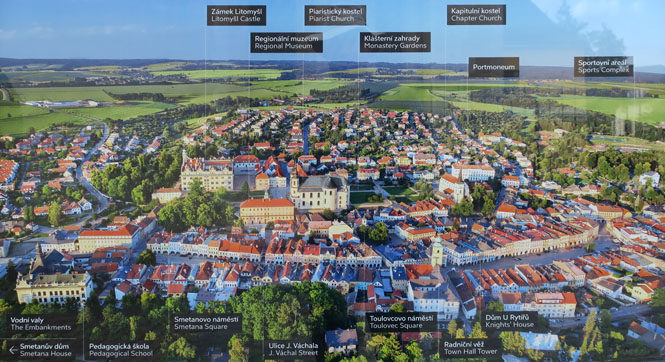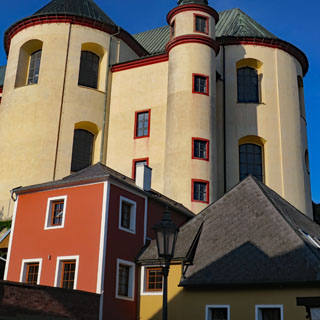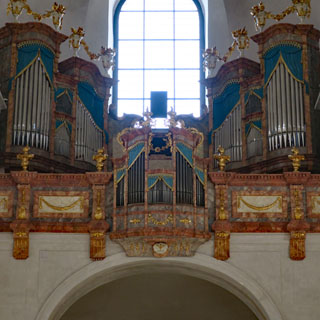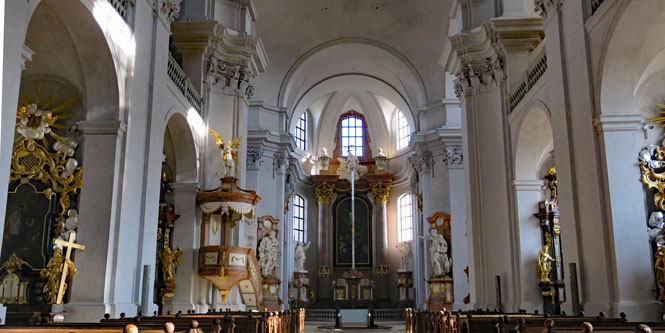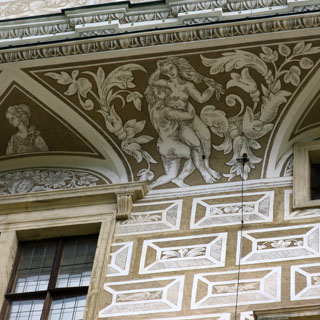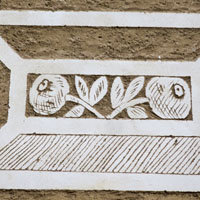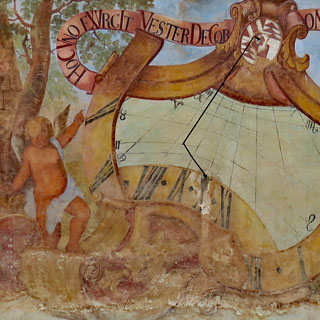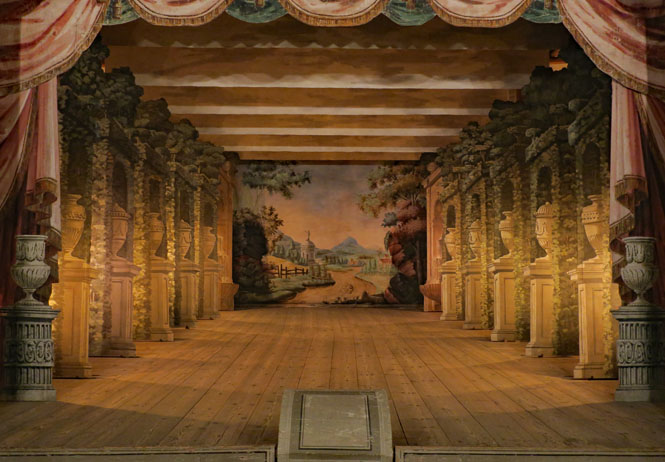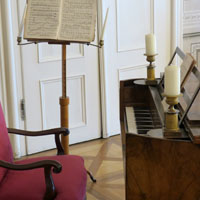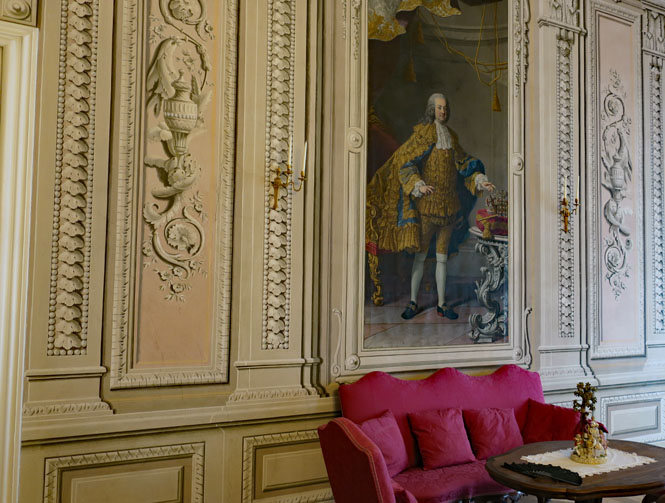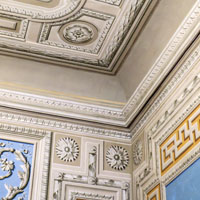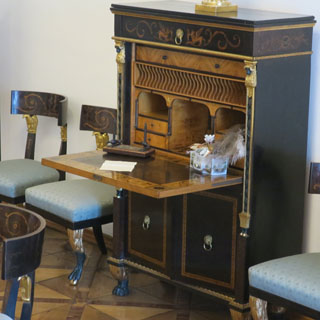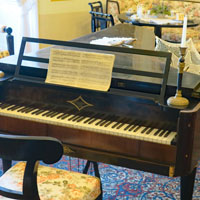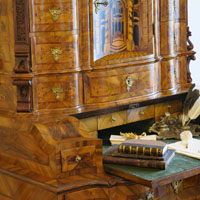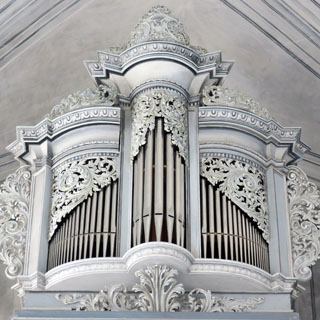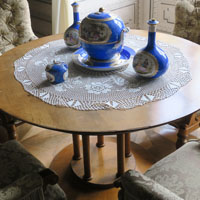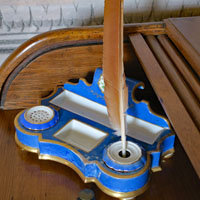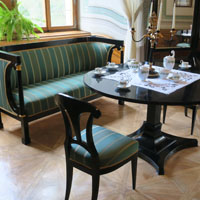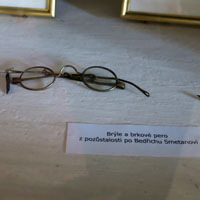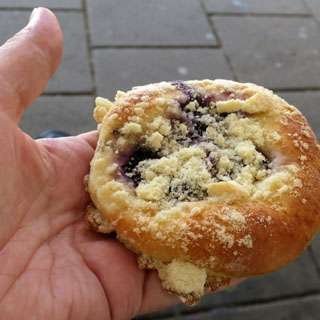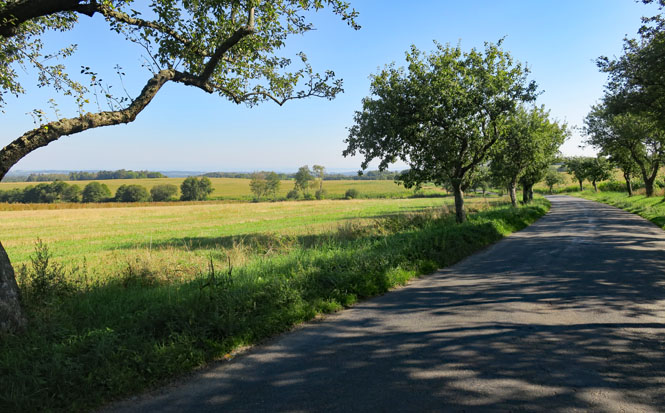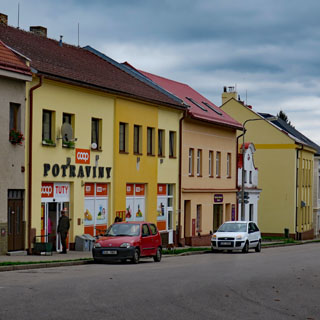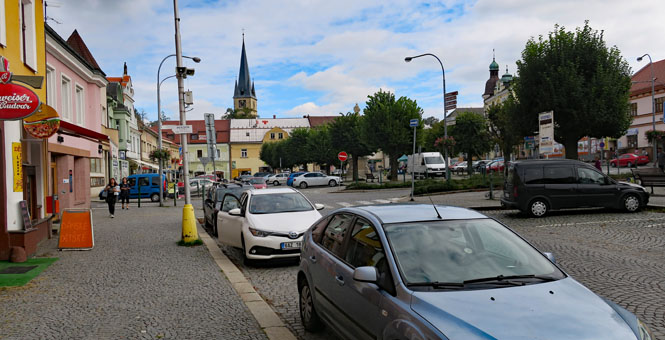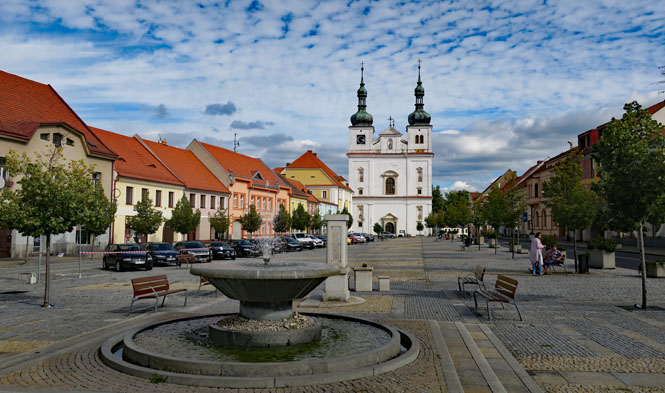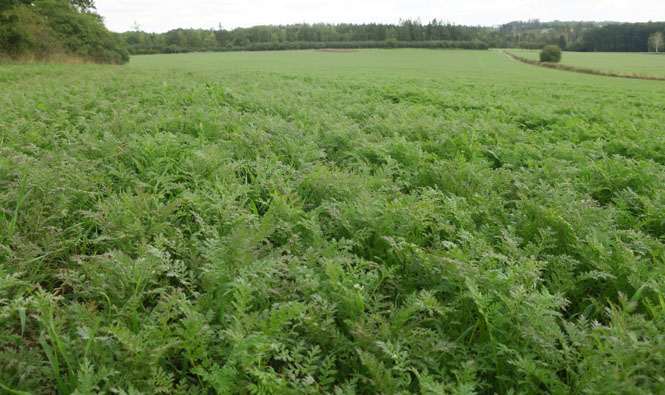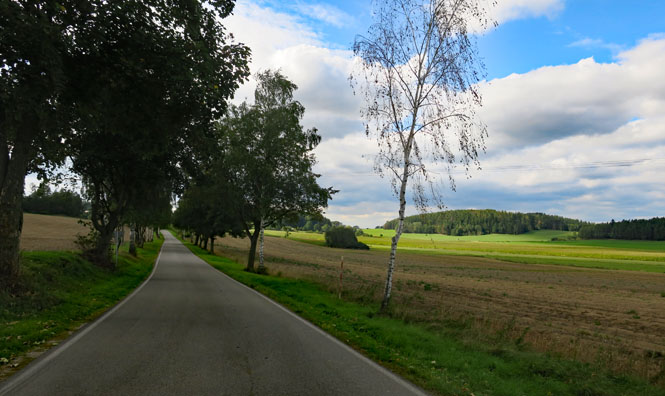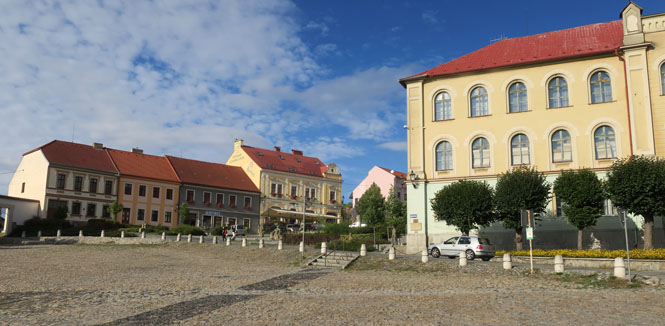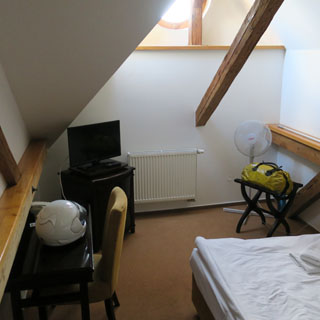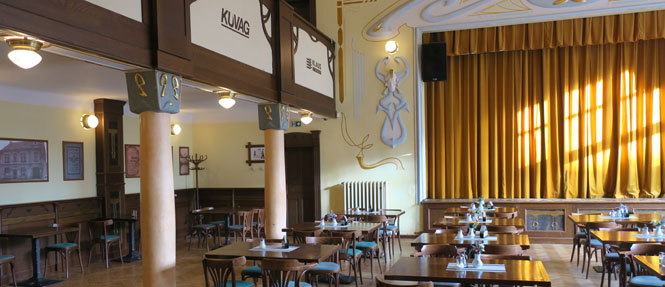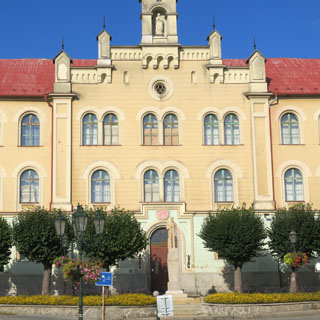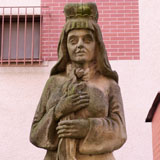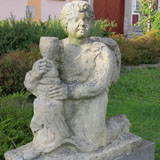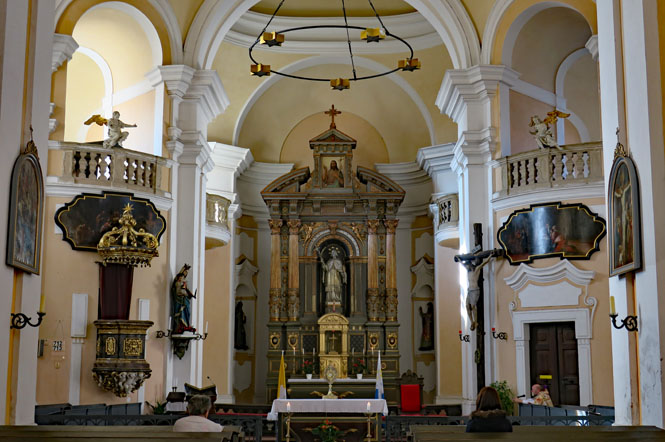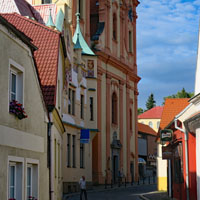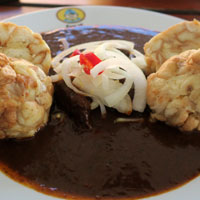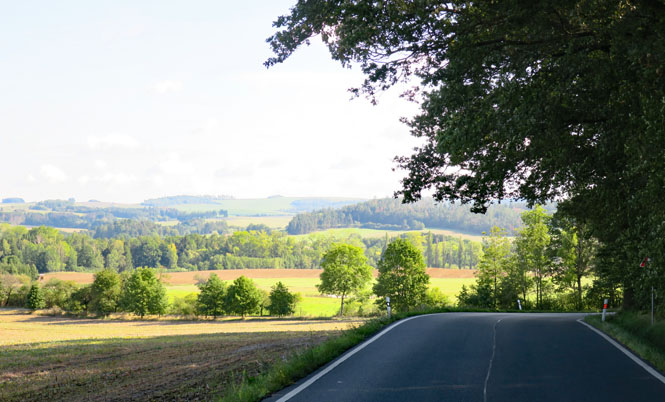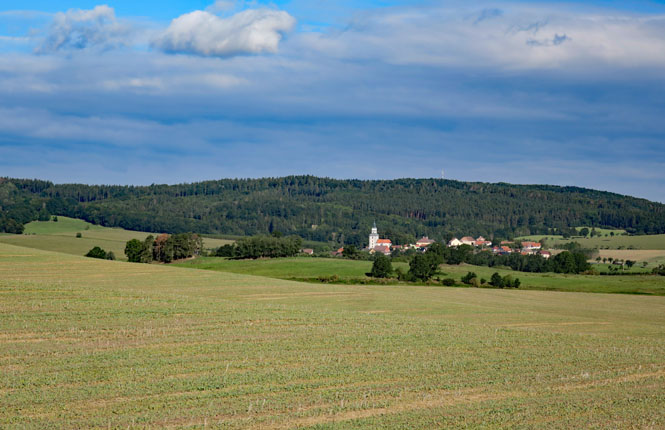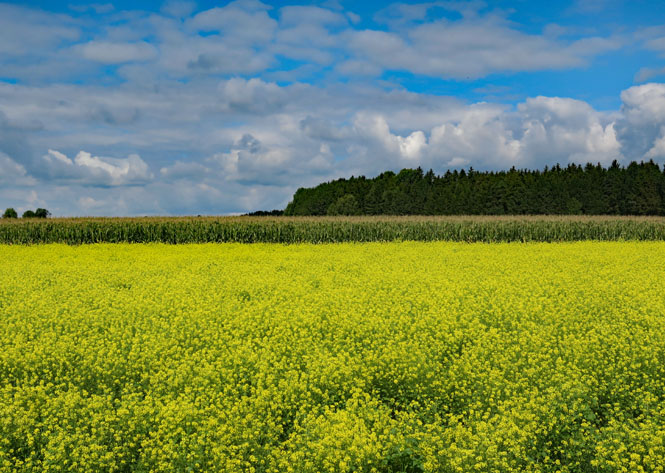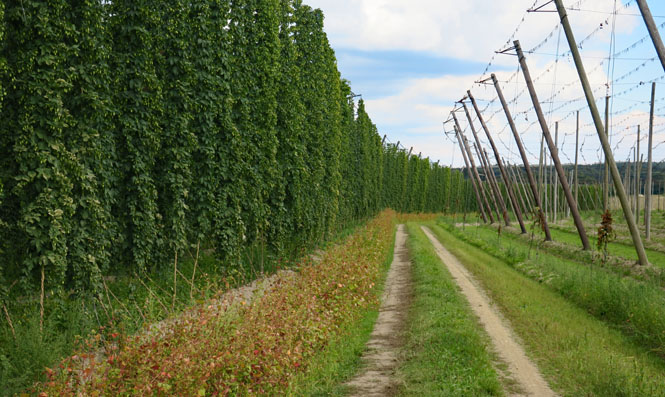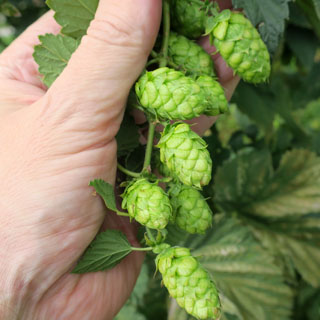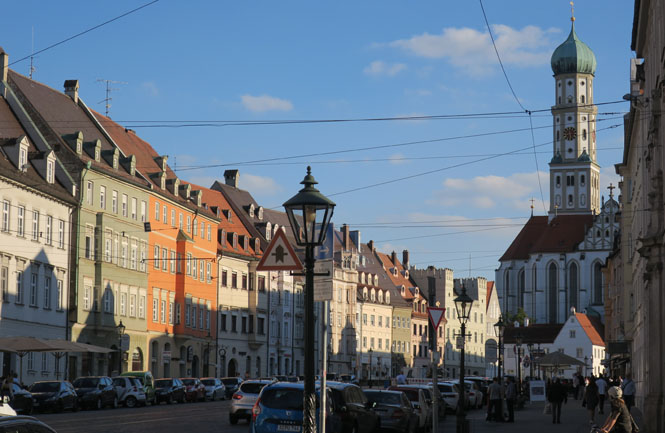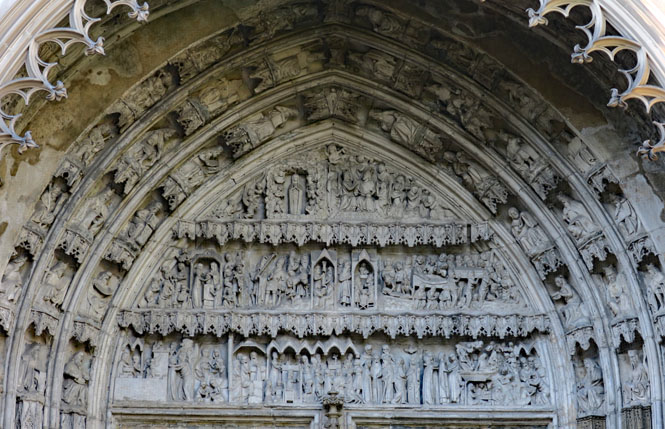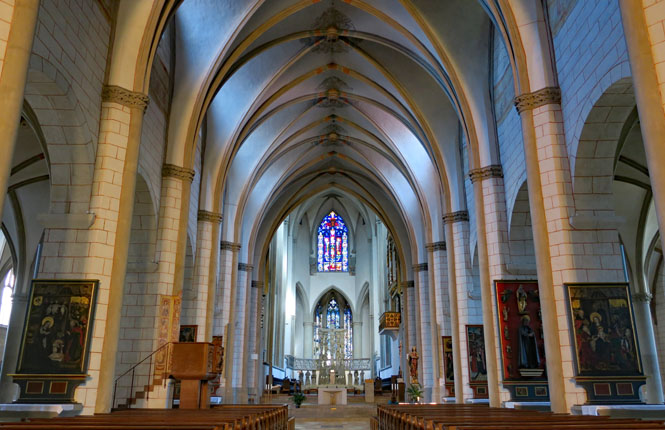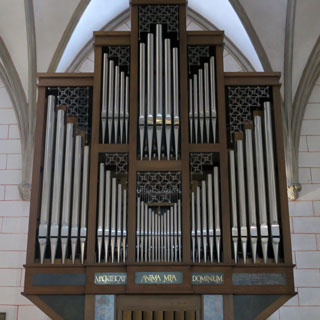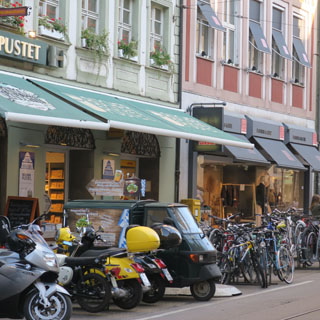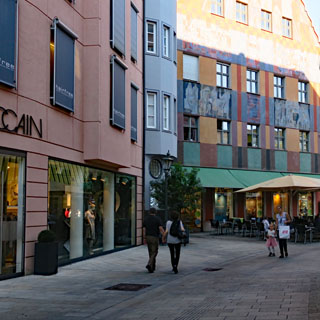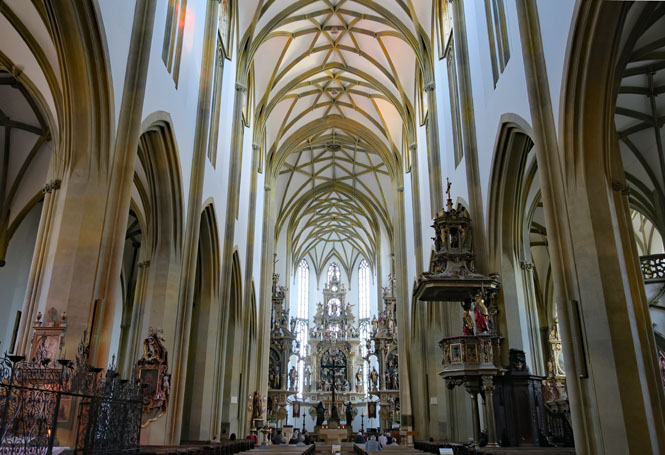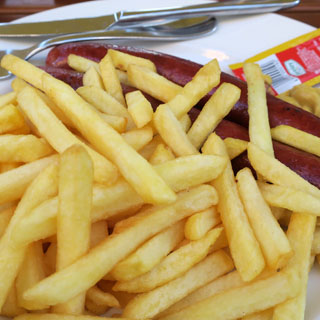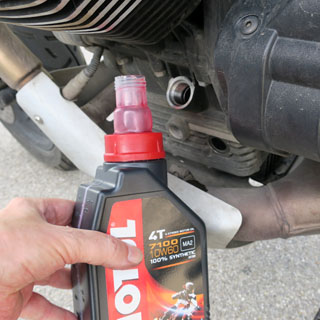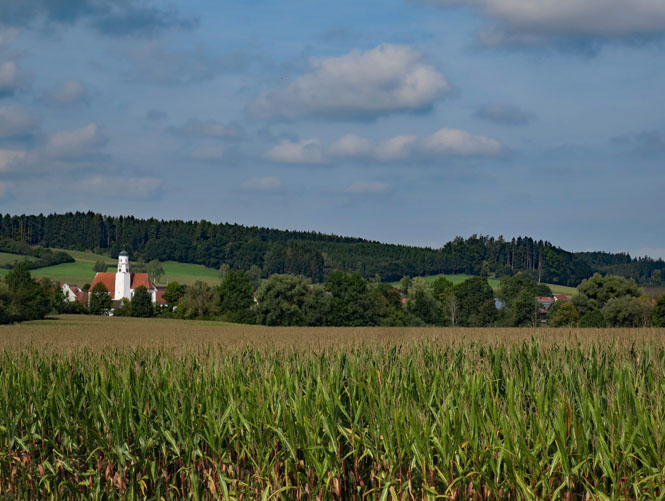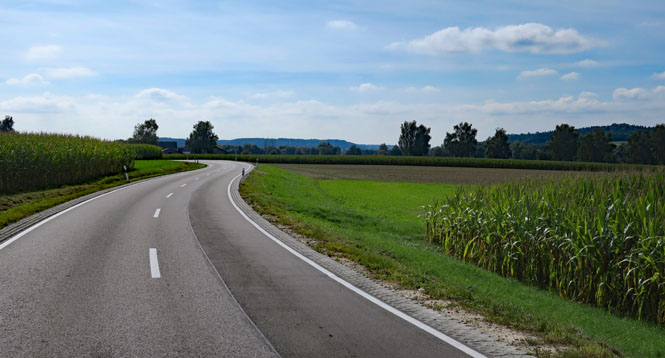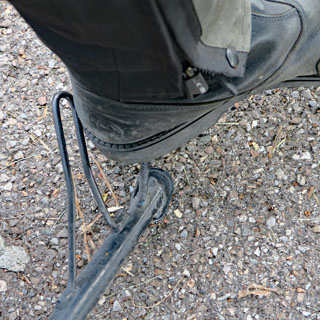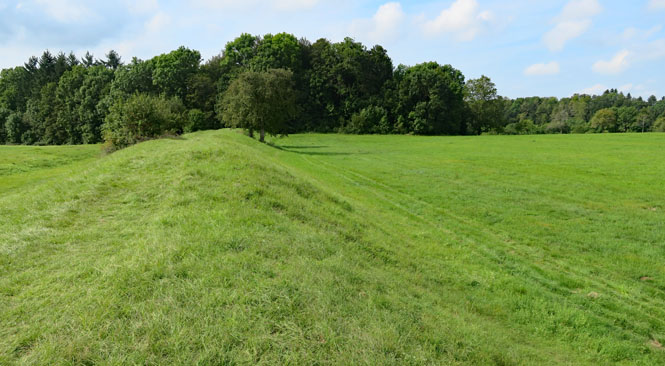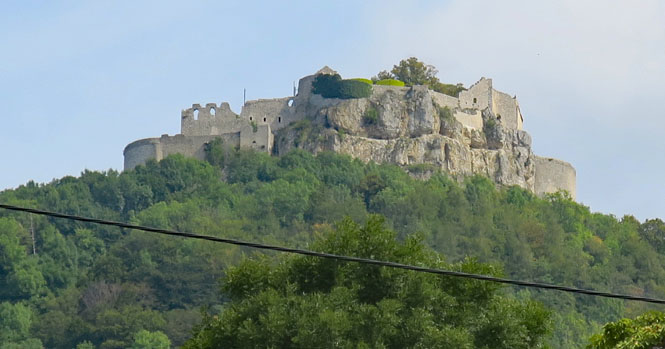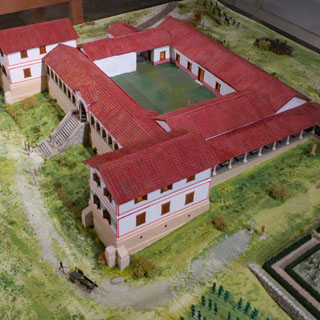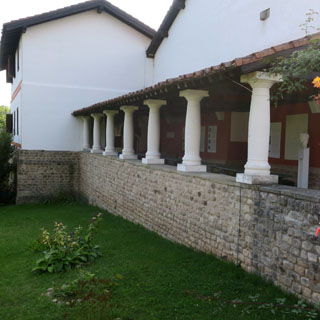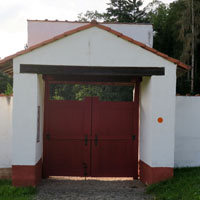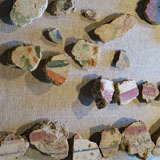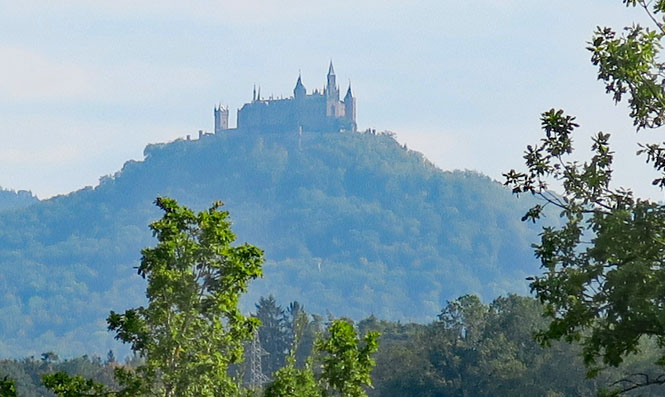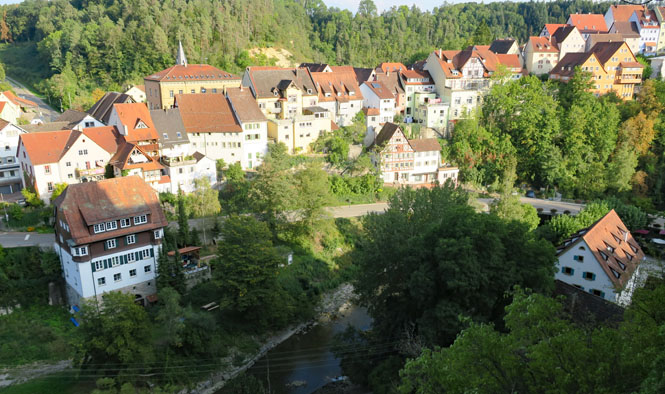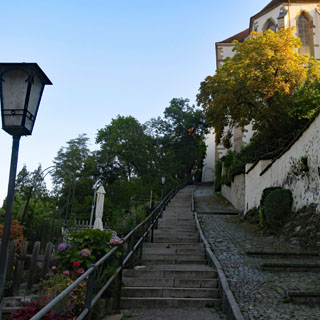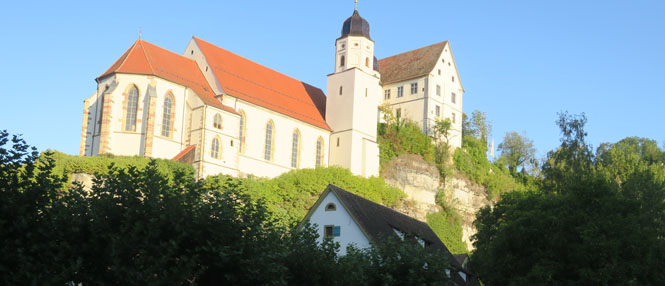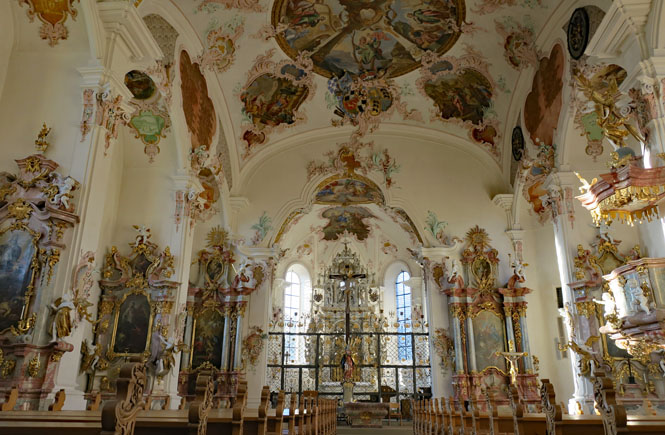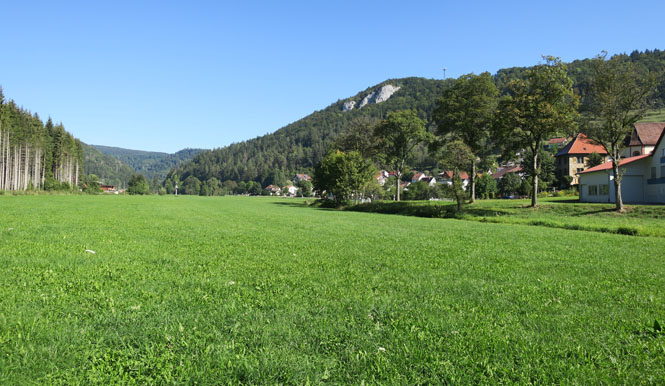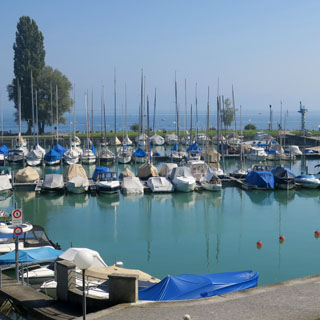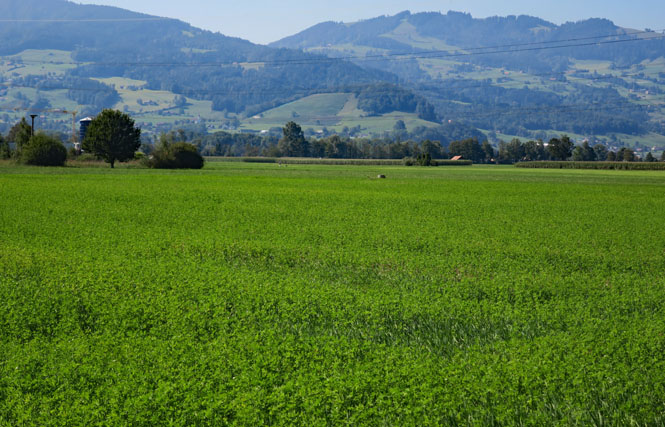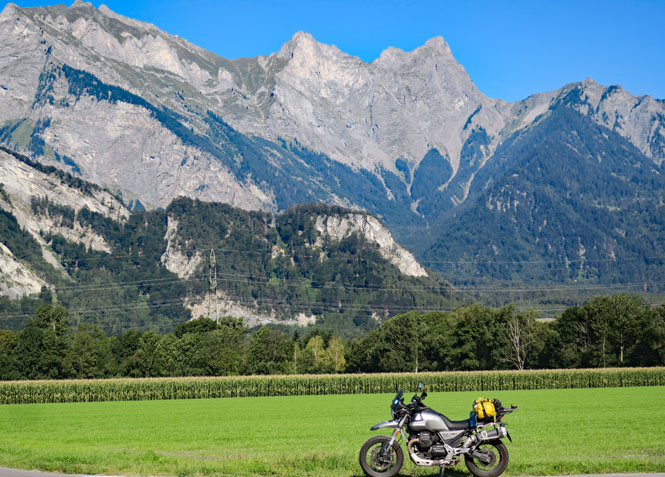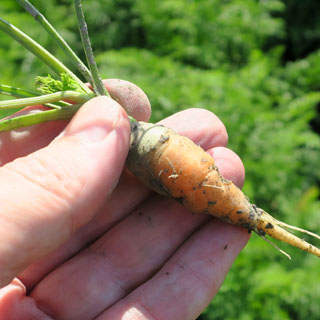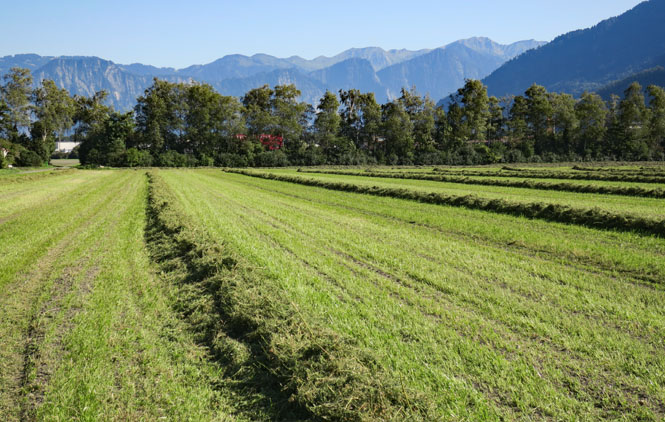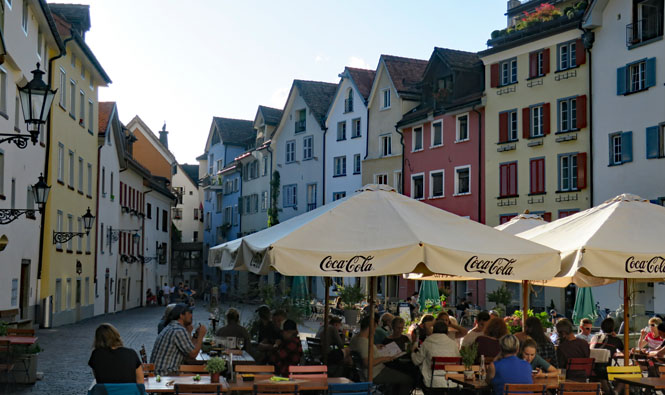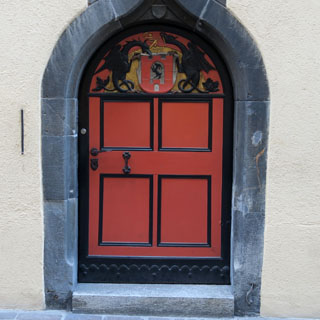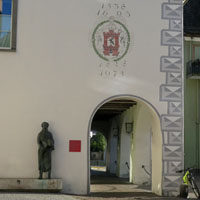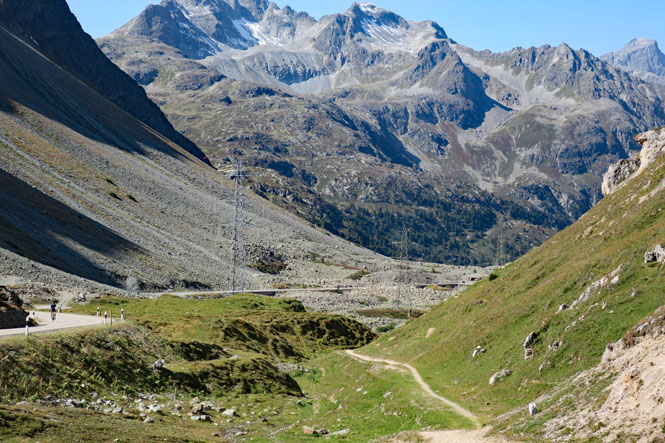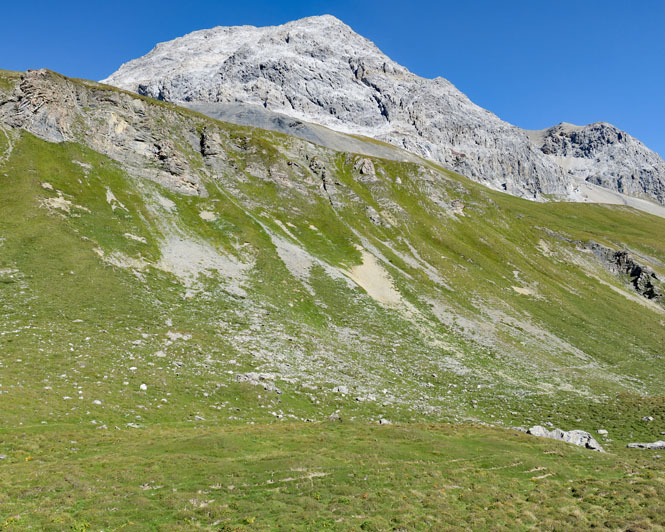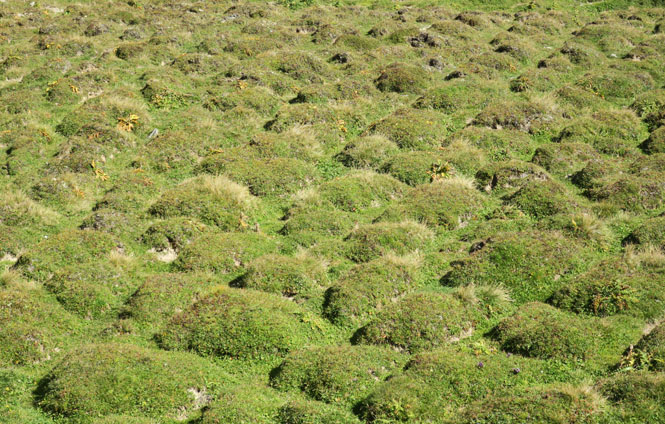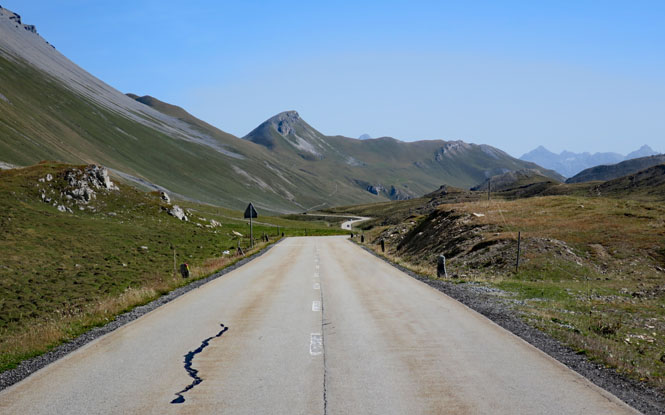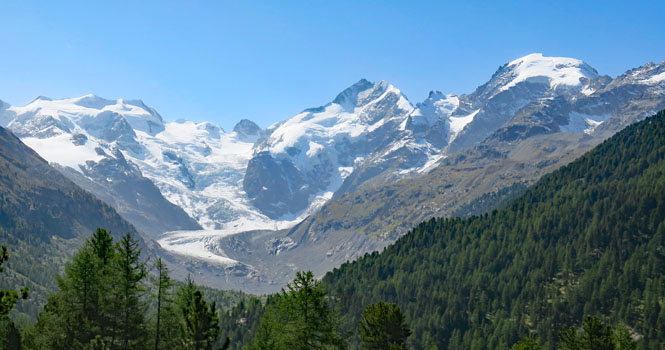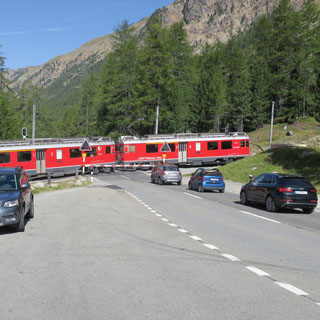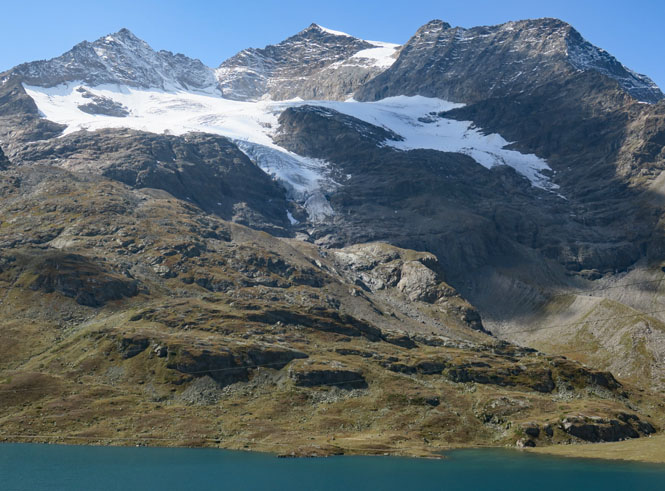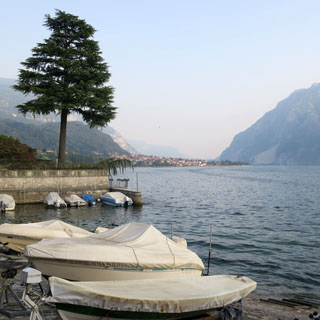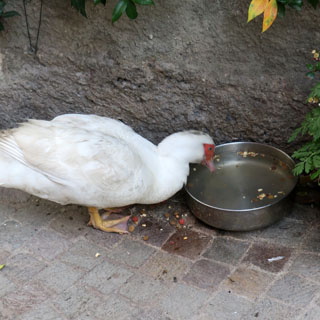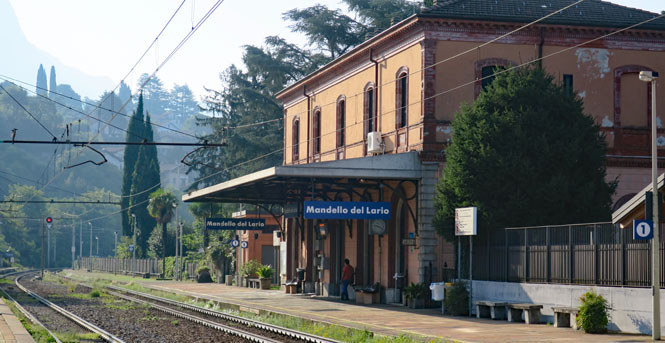








September, 2019
Sunday |
Monday |
Tuesday |
Wednesday |
Thursday |
Friday |
Saturday |
| 25 Aug | 26 | 27 | 28 | 29 | 30 Depart |
31 Lecco, Italy |
| 1 Sept Lecco, Italy |
2 Balzano, Italy |
3 Villach, Austria |
4 Murska, Slovenia |
5 Tata, Hungary |
6 Holloko, Hungary |
7 Presov, Slovakia |
| 8 Tatry, Slovakia |
9 Bojnice, Slovakia |
10 Litomysl, Czech |
11 Litomysl, Czech |
12 Nepomuk, Czech |
13 Augsburg, Germany |
14 Haigerloch, Germany |
| 15 Chur, Switzerland |
16 Mandello, Italy |
17 Milano, Italy |
18 Depart |
19 | 20 | 21 |
The Carpathian Mountains extend in a large arc from Romania through Ukraine and into Poland and Slovakia before ending with the Tatras Mountains of Slovakia. On an earlier ride, I explored the southern Carpathians in Romania; for this trip, I'll be exploring the northern end--the Tatras Mountains of Slovakia.
I'll be making a large counter-clockwise loop from Italy, returning through Switzerland. I'll work out the details along the way.
 Europe Motorcycle Trip #22
Europe Motorcycle Trip #22
Beyond the general goal of the Tatras, this would also be a good opportunity to see a bit of northern Hungary as well as other parts of Slovakia and the Czech Republic I've not ridden.
 Italy
Italy
The outbound flights all came off without much problem (unlike my trip earlier in the summer, which was a bit of a mess).
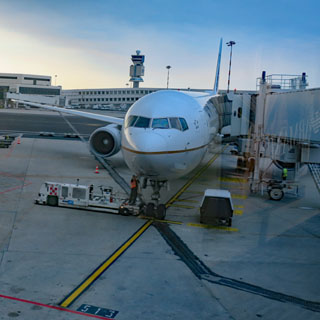
It's Chicago to Newark to Malpensa then the express train to Milan and another regional train to Lecco at the lower (right side) tip of Lake Como.
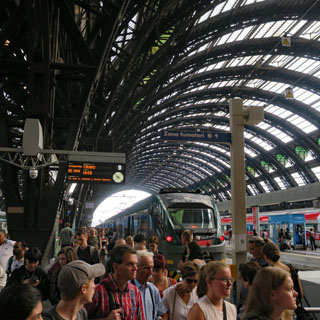
Lecco, Italy. I'll be two nights here.
It's always been this way, but it still seems unusual how late into the night these folks extend their day.
If it were in California, this would be a taco-truck. In Lecco, it's a polenta trailer, serving more variations of polenta than you might have thought existed.
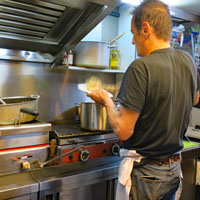
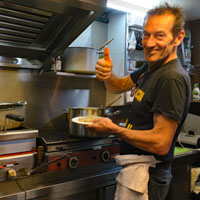
The Azzone Visconti Bridge was built in 1336. It now has eleven arches instead of the original eight, and of course, all the shops and buildings along its length have been removed.
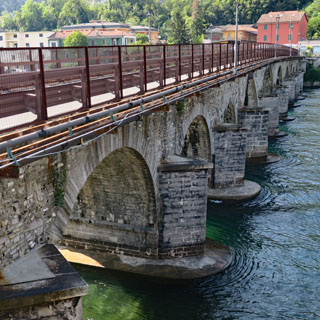
Polenta is a common food in this region, and so is risotto and dried fish from the lake.
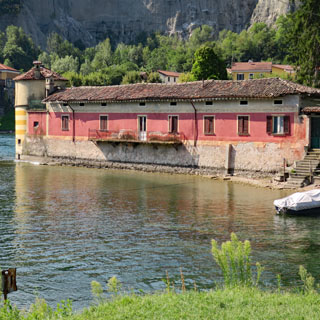
It has been many rides since I was on anything other than a Moto Guzzi Stelvio. But, that model is out of production, and the one that I was scheduled to ride was destroyed in an accident just prior to my arrival, so I'll be on a Guzzi V85TT, instead.
It's a smaller bike than the Stelvio in every way. That's a concern, but it turns out the bike did fine (even though I sometimes wished I could make it a bit taller and a bit more powerful). Meanwhile, I've got to figure out where to put everything.
The duffle-bag is on the back half of the seat and is easily strapped to the brackets for the saddle-bags (that I won't be using). The tool-bag that had always been strapped to the handle-bar won't work there, but straps easily just behind the duffle-bag. My Spot device (the orange thing) straps to the rear rack where the box would go. The battery-powered GPS attaches to the handlebar just as before. I wired in the harness for my electric vest (which I never used) and the tire air-pump (which is stored under the seat). It's all easy enough.
My initial route is from Mandello up the valley to Sondrio and then across the Adamello Alps towards the Dolomite.
So, where are the photos of the Adamello Alps? It either was raining or was dense with fog (or both), so there are none for this section. In any case, I've been here several times.
Bolzano, Italy. In this part of Tyrolean Italy, the towns feel and look more Austrian than Italian, which reflects the (not always smooth) history of this region. You'll probably also hear more German spoken than Italian.
My hotel is in the historic--pedestrian only--part of the city, but I was able to park the bike not far away near one of the city gates. Gasthof/Albergo Figl is where I'm staying.
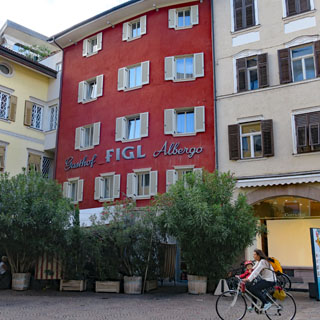
Klaus Walter was really quite good using his hands, feet, knees and mouth to play his music.
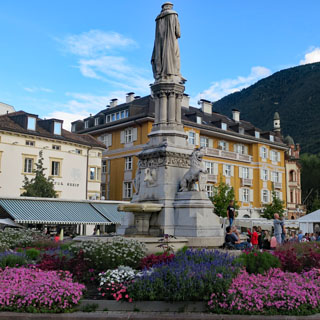
Bolzano Cathedral (1184).
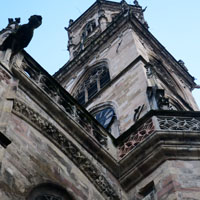
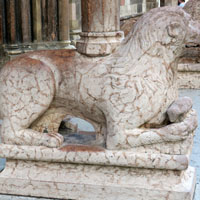
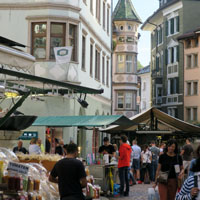

If it's fresh food you want; this is where you'll find it.
Aperol Spritz, Pizza Quattro Stagioni and Apfelstrudel. While the "four-season" pizza is pretty much a standard found everywhere in Italy (I would suppose), the other two items are perhaps most identified with this region.
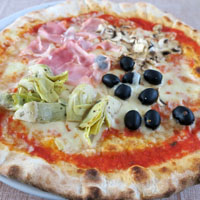
I mentioned to the waiter that I see more people drinking Spritz than beer at the outdoor tables--he agreed, while looking a bit exasperated (he preferred beer).
The Dolomites are part of the Alps, but they're so distinctive that it's no wonder that people speak of them as something separate. These are rough and jagged mountains that it might seem impossible to build roads through. I'm riding east out of Bolzano.
The bit of green (below) is the upper part of the most mild ski slope any beginner could want.
Wonderful roads, but be careful in the turns for the next bus to swing across the full width.
For even this mild hairpin turn (below, right) I noticed a bus would first stop to make sure that there was no traffic before proceeding around the curve.
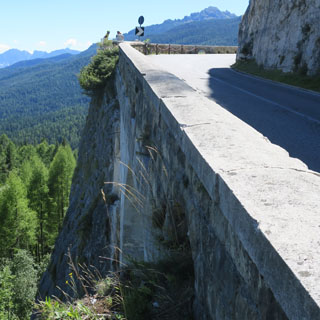
Cortina d'Ampezzo, Italy. Years ago, I stayed in this resort town, but today I'll be skirting around it.
The village of Valle di Cadore, Italy.
Large parts of the Dolomites are impassable, so while points A and B might not be far apart, the road between them might take a couple of hours. I think were these mountains in Switzerland, there'd be more tunnels. As it is, there are very few.
Tolmezzo Sud. It'll be eons before the supply of building stone is exhausted.
 Austria
Austria
Villach, Austria. I was trying to avoid roads I've already ridden, but I find that's difficult to do when there are only so many ways through. Villach was a frequent bombing target during the second world war, but they've done a good job at rebuilding and maintaining the historic center. The photo was taken from my hotel window (below).
I think the architect for the hotel was making a deliberate effort to break from all the historic constraints--let's have boxes on stilts.

Things are pretty quiet this evening (we're not in Italy).
During the middle-ages, churches often made it a point to remind people of their mortality (below, right).

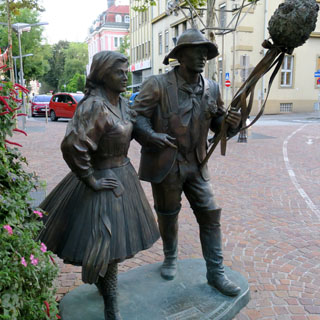
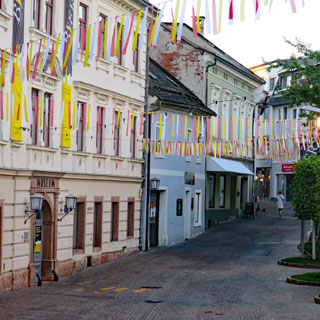
Dinner at the local brewery.
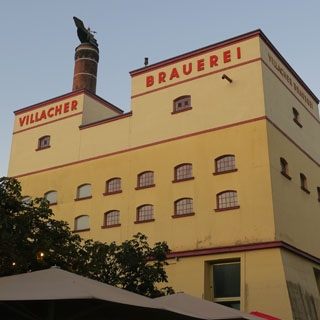
The sign said "Tschaukofall", but said nothing of how far I needed to walk to reach the falls. The answer: "about thirty minutes."
Fresh running drinking water is a nice touch along the trail. Motorcycle boots are not the very best hiking boots.
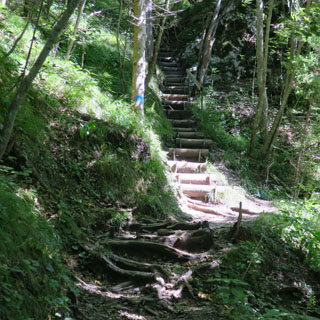
Tschaukofall is pretty impressive. I'm standing in a natural grotto where the roof has long collapsed--which means I'm looking through an arch at the falls. Having climbed plenty of steps to reach this view-point, I saw no reason to descend all the way down to the pool (only to have to climb back up, again).
Riding through a long, flat, narrow valley in southern Austria. Plenty of corn, but this sure isn't Nebraska.
I'm not too impressed by the suspension on this V85TT. I've adjusted the settings on the forks and the rear shock to full-soft, but it's still an unreasonably harsh ride compared to the Stelvio I'm more used to. Anybody who takes this thing off-road has my respect. In any case, I've got full pavement tires, so I'm not going to be tempted.
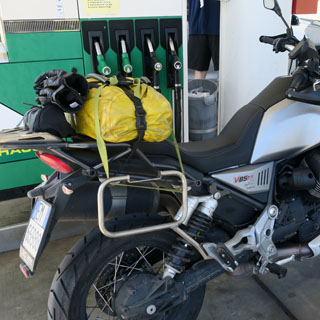
It wasn't until I was right on the divide where one road splits right to Slovenia and the other stays left in Austria that I decided to drop down to Slovenia. Right turn, it is.
 Slovenia
Slovenia
Brezno, Slovenia
I'm following the Drava River. Years ago, you'd be seeing vast log rafts floating down this river.
Maribor, Slovenia.
Hrastovec Castle (built ~1200). Today it's either a prison or a psychiatric hospital (depending on what you think "Social Protection Center" might mean--I don't know).
Murska Sobaota, Slovenia.
This seems an unlikely place for a hotel, but here it is. It took a couple of phone calls to track somebody down who could help check me in.

My dinner is buchweizen mit steinpilzen followed by bograč. I've found that regions where buckwheat is a staple always have good food--you cannot go wrong even if you're not sure what you've ordered.
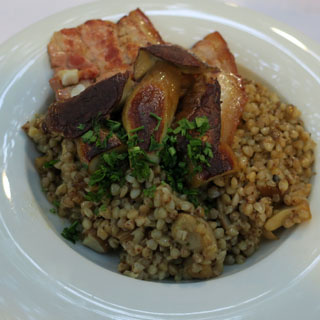
Hodoš, Slovenia.
Small gardens like this one are quite common. They're often just outside the town and it isn't obvious who might be tending it. As to the sign--I saw more than one like this, but I never saw the animal that is to be avoided.

 Hungary
Hungary
I'll be aiming for somewhere north of Budapest.
Dáka, Hungary.
Béb, Hungary.
Bakonykoppány, Hungary.


The Bakony Mountains are a fairly rugged area just north of Budapest.
The Cistercian Abbey of Zirc dates from somewhere around 1100. It has been reorganized and dissolved a number of times since then, but is currently an abbey, once more. It was a monk who unlocked the church door and let me in to take these photographs.
The church is today full-on baroque, so it's clear that the buildings have been remodeled substantially over the years since the beginning.
I'm not sure they didn't spend more time and money on embellishing the organs than they did the organs, themselves.
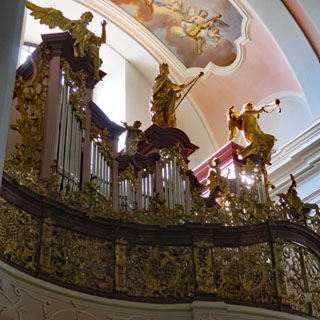
Looking up at the ceiling. Goodness!
Tata, Hungary is on the direct route between Vienna and Budapest, so it has always been a particularly important town for travellers.
The Kristaly--Hungary's oldest running hotel--is on the road to Vienna.
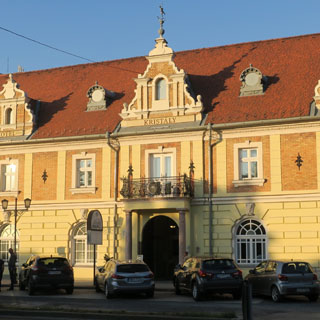
Castles and fortresses and palaces have come and gone through the centuries.

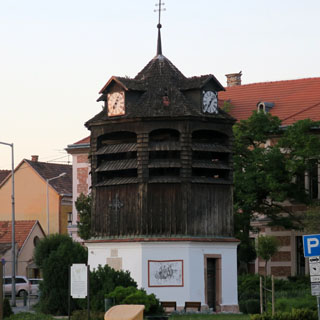
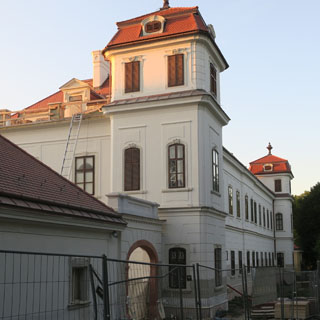
Near Neszmely, if you walk between the vineyards down the hill, you'll meet the Dunav (aka Danube) River. Swim across the river and you'll be in Slovakia. I'll be staying on this side for awhile, yet; there are fewer places to cross than you might expect.
Esztergom.
The ferry from Tahitótfalu to Vác across the Dunav River. I see my ferry on the other side, so I'll be here for a spell.
I may not be able to read Hungarian, but I can figure out that It'll be 1290 Forints to get across. I had money from a previous ride through Hungary, but I only now find that my money is no good--it has expired. Bother. This has happened before and in other countries, so I have only myself to blame.
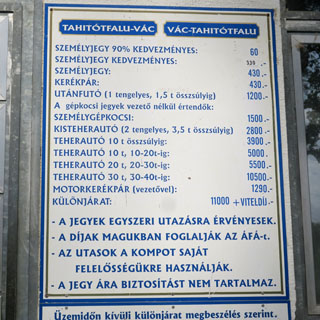
The ferryman didn't speak English (why should he?), but eventually he did agree to accept €5.00 (which is doing pretty well for himself, since the actually conversion from Forints to Euros would be €3.88)
Note: Europe is largely cashless, and most people (including myself) use a contactless bank card--or phone. I noticed that often service stations didn't even have the equipment to accept cards that were not capable of contactless transactions. Larger hotels will still accept old-fashioned American cards with magnetic stripes, but you'd be best advised to get a proper card if you're traveling away from the more popular cities.
These roadside shrines are quite common, particularly on the smaller back roads. They're older than you might think (I saw some that were over two hundred years old), but are still maintained with fresh flowers.
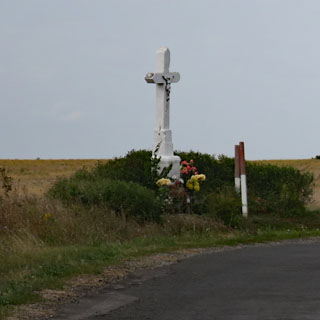
These roads are giving my much-to-stiff shocks a workout. In this case, the bridge was built wide enough for two vehicles, but the road clearly is not.
Hollókő, Hungary and its connected fortress in the Cserhát Mountains, dates from around 1300 (after the Mongol invasion) and is now a UNESCO World Heritage Site.
There's a whole mythology about the town that concerns magic ravens and empowered women who will stand against anybody, but it's a bit confusing, and I've forgotten it.
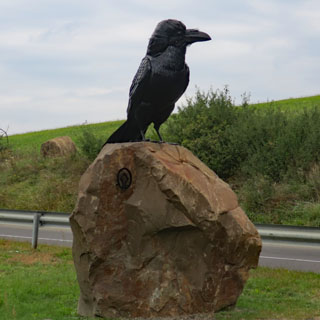
It must be difficult to live in a town that's also a showplace.
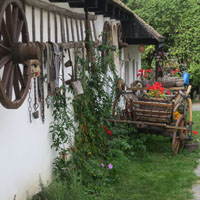

I wouldn't expect to find a hotel of this quality anywhere near here, but you never know what you'll find if you're not looking.

It seems the whole town is taken up by constant needlework (as it evidently has for centuries).

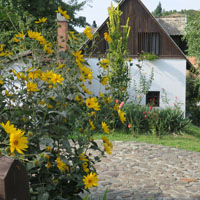
The castle is on the top of an old volcanic outcrop. It would have relied on a cistern and the systematic collection of rainwater.
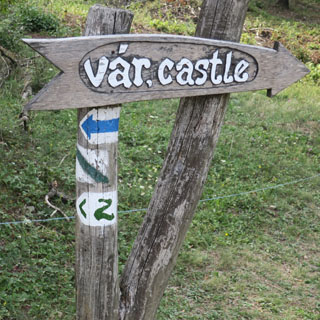

There has been a general preservation and reconstruction of the castle, but not so much as to destroy what is historic. The video did a really nice job at using CGI to show how the castle was built and how it eventually came to decay over the years. It's an especially good way to show the original form of these historic buildings without the damage of actual reconstruction.

The view of Hollókő from, the ramparts of the castle.
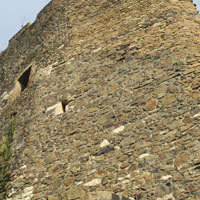
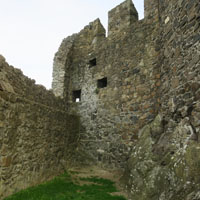
And, the view from the castle in the other direction.
The castle interior.
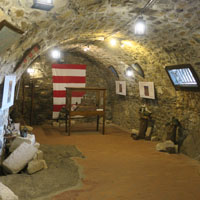

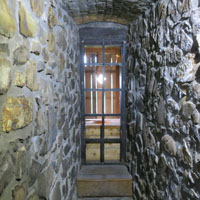
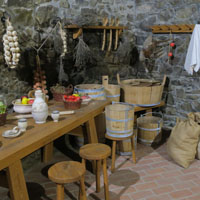
Which way? Turn left.
 Slovakia
Slovakia
Crossing over the Ipeľ River into Slovakia.
Figa, Slovakia.
The V85TT dash. It's pretty and even entertaining at start-up (what with the dynamic graphics). But, I'm afraid it's not the best at giving you the information you need at a glance. With black-on-white, white-on-blue and grey-on-white words and numbers as well as a bunch of unneeded shapes and pictures, it could be much better. It will also give you information telling you when to shift gears, but thankfully, that can be turned off. Most odd, in the dark area outside the lit rectangle--where all the annunciator lights hide--are even more graphic lines that don't mean anything at all.
When it comes to instrumentation, clean-and-simple should be the guide and the goal.
Paskova, Slovakia. Do you see those flowers along the wall in alternating colors? It's a bit of beauty common in most all these small towns.
Kunova Teplica, Slovakia.
Krasnohorske, Slovakia (Krasna Horka on the mountain). I've been to the castle on an earlier trip, so I won't be stopping this time. It's worth visiting.
The last time I was here (in 2011) this road was about half gravel. I see they've spread a bit of asphalt. It's still rough, but it's an improvement.
Mnisek Nad Hnilcom, Slovakia.
Wood fires smell so good on a cold and wet day.
Prešov, Slovakia.
This Soviet-era hotel might have four stars on their sign, but I'm not so sure.
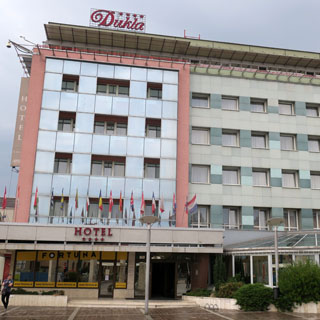
The long mural along one side of the hotel shows the history and glorious struggle of peasants and the laboring classes up to the current day (meaning 1950).
Katedrálny chrám svätého Jána Krstiteľa (Cathedral of St. John the Baptist).
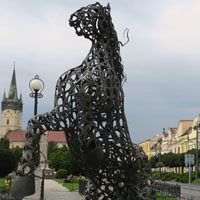
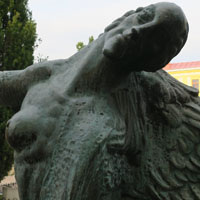

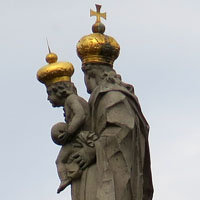

The historic town center is an amazing mixture of styles over the centuries. If you wander too far, however, you'll be in neighborhoods of grey concrete boxes.
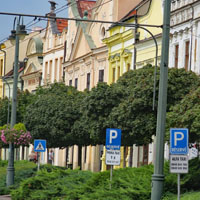
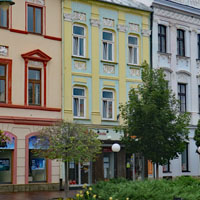
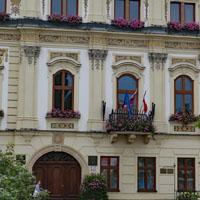

Kostol sv. Mikuláša.
Hearty bread, goulash, pork and dumplings (and beer). Excellent.
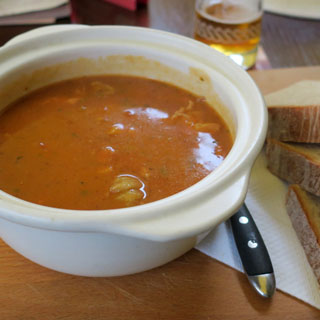
Cigla.
I mentioned at the start that I never used my electric vest. That isn't to say that there weren't times when I would have turned it on if I had only been wearing it.
I love these narrow, empty rural roads that will still take you across the country for a hundred miles.
Riding north towards the Poland border. The Tatras Mountains are to my left.
 Poland
Poland
I'm in the Tatras Mountains--my original goal--so, now I've only got to sort out where I can go next. The map has quite a few roads shown that are X'd out as being permanently closed to traffic. I'm not sure my GPS knows that detail, so I'll need to pay attention.
In Jurgow, Poland, looking south to the Tatras Mountains. There are no roads that will cross over these mountains (this isn't Switzerland), but there are valleys that will get you through them.
 Slovakia
Slovakia
Starý Smokovec, Slovakia.
There are grand hotels that long predate the Soviet occupation, and this is one. It deserves all its stars. My room is essentially up high in the attic, but that's no matter.
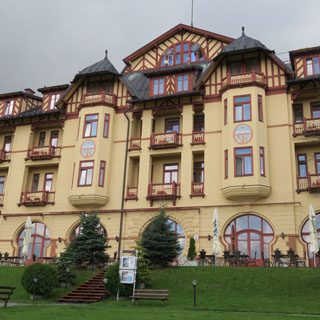
The ground floor has a series of lounges for whatever mood or form of relaxation might suit you.
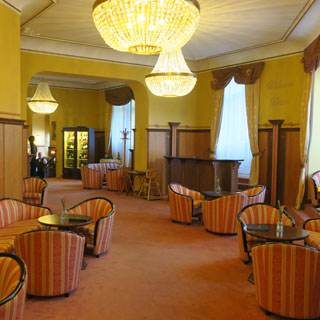

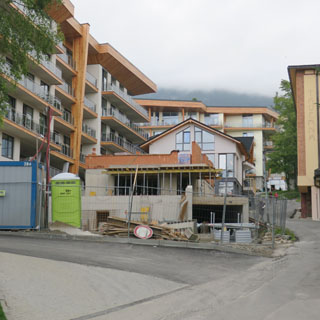
The train comes to Starý Smokovec, which makes this an attractive place for people from all over Europe.
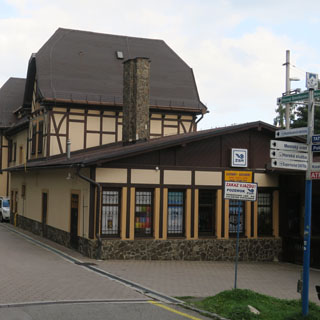
Just behind my hotel is the start of the inclined railway (funicular) that goes partway of the mountain.
The steps you need to know: 1) get a blank card from the nice lady in the office, 2) insert the card in the self-service machine and load it with appropriate credits using your credit card, 3) wave the card at the turnstile to deduct your credits and board the train. This same card can be used at several other locations. Yes; you might select English as your preferred language, but, the menu will at some point revert to Slovakian. Carry on, figure it out.

We're only part way up, but the view to the south is spectacular.
Several walking trails start from the top of the funicular. Truly, hiking is the only way to really see the Tatras Mountains, and there are people staying in my hotel who have come to do just that.
The High Tatras Mountains. These are the highest peaks in the entire Carpathian Mountains, stretching all the way to Romania. After all the rain I've had, the clouds have cleared and it's just an amazing evening--it's such a beautiful place.
In the dining room after returning by the same funicular. Some chose to walk back down. I did not.
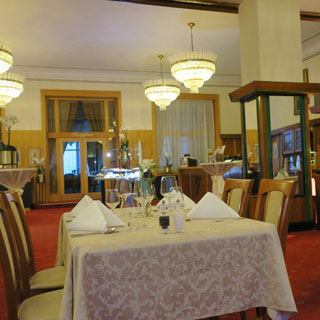
The Belá River, which originates in the High Tatras.
This morning, it's rain and fog; I'll have much more before it's done.
I like this. It's a roadside spring with mineral water. I stopped here to get out of the rain for a bit. I prefer my water to be clear, but no doubt there's some health benefit from whatever is in this.
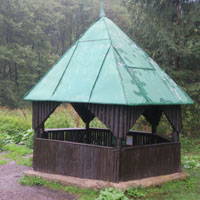
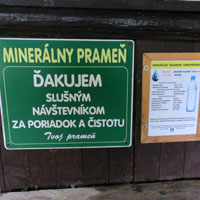
I'm standing under the (mostly) protective cover of a service station. I don't know that this downpour is going to get better anytime soon. There is a lot of water coming down.
I've been on lots of amazing mountain roads, but there will not be any photographs until the rain stops.
Let's check the radar to see if things are going to improve this evening. No; it doesn't look like it. Wave after wave of green, yellow and red blobs are moving through. I'll look for a likely town to call it quits for the day.
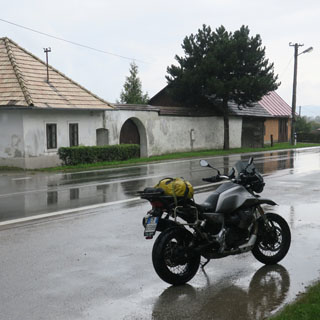
Bojnice, Slovakia.
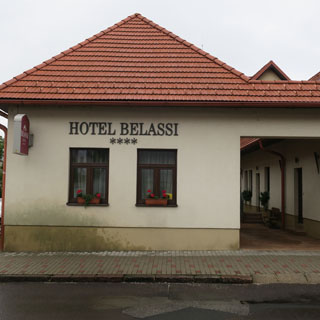
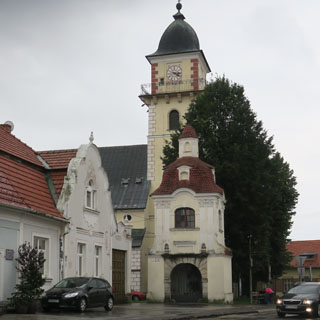
The Bojnice Castle dates from around 1100. Like nearly all castles of this age, it has been rebuilt and remodeled countless times. The current look is a romantic notion of what the 19th century owner thought castles should look like.
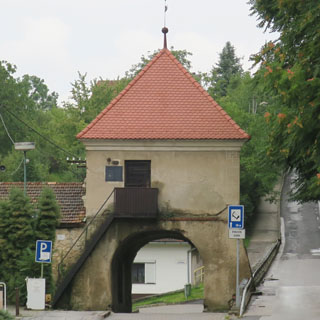
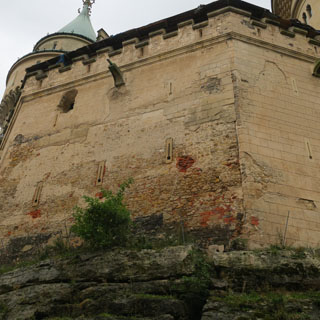
The menu was in Slovakian, but I think this is really an interpretation of Carolina BBQ and nothing to do with Slovakia food at all. Even so, it's fine (but not exactly Carolina, either).
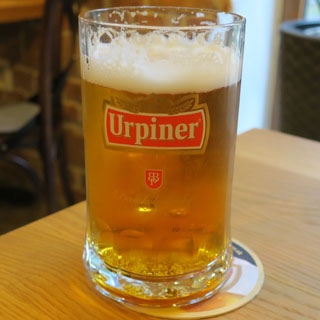
 Czech Republic
Czech Republic
The train station at Svatý Štěpán. I'm guessing that it will stop if you wave at it. The trains I've seen on this line are not exactly trains, as typically there's just a single car.
This weather is much more like it.
Štítná nad Vláří-Popov. This nice little town could be a stand-in for hundreds of other small towns, just like it.
Bedihošť. Notice the large factory behind the church. I'd see quite a few decommissioned factories, but it was not easy to tell what, exactly, they once made.
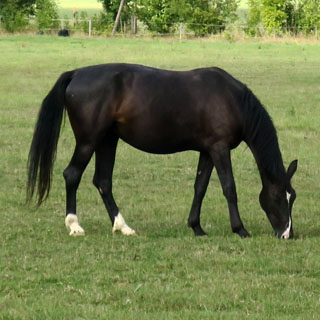
Litomyšl, Czech Republic is as ideal and pretty a Czech town as you'd want to find. I understand that this is one of the larger market squares (that word used figuratively as there is nothing square about it) in the Czech Republic.
I'm again in the attic. Do you see that narrow vertical window at the top of the white building? That's my room. It also has a couple of skylights.

That stylish table and chair in the corner of my room is where the narrow window is. Would anybody use that table? I didn't. Today, as is everyday, is laundry day.

Litomyšl is not large, but there's a lot to see. This is a photo of a helpful sign I saw down in the market square.
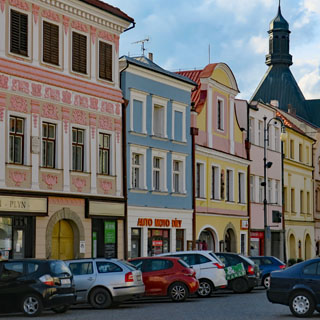
The covered arcade extends on both sides of the street.
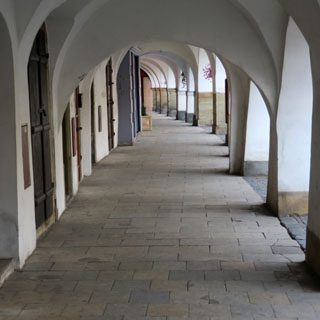
Kostel Nalezení svatého Kříže (Church of the Discovery of the Holy Cross), built in 1716.

Litomyšl Castle was built in 1568 in the Italian Renaissance style. It remains remarkably complete and the rooms are much as they were when the castle was last occupied.
The painted exterior (called sgraffito) is just amazing. The extensive painting continues throughout the interior.
Sgraffito is a technique produced by applying layers of plaster tinted in contrasting
colors to a moistened surface
- Wikipedia

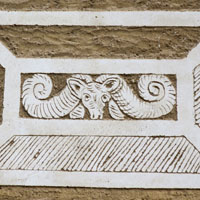
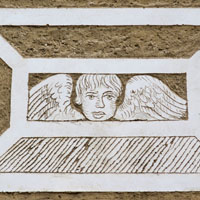
The castle courtyard
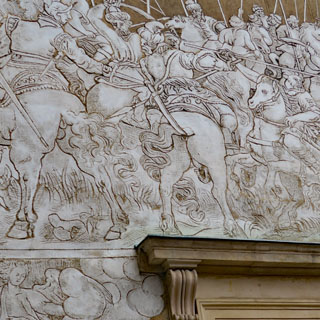
The original 18th century castle theater is one of the few left in Europe. Even the stage mechanism is intact.
My guide for the tour (below) spoke only Czech, but I at least had a printed pamphlet for each room that was written in English.


The castle interior.
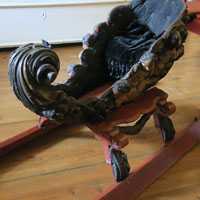
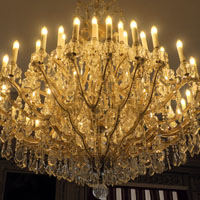
The illusions of the exterior are continued inside. That hanging portrait and all the molding you see on this wall is not real. The wall is completely flat. It's all an illusion.
The floor, the wall and the ceiling are all smooth. It's an illusion, too.
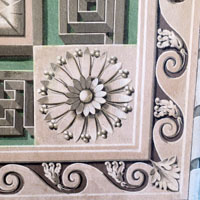
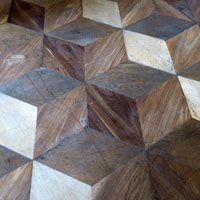

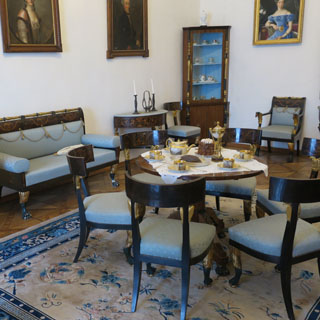
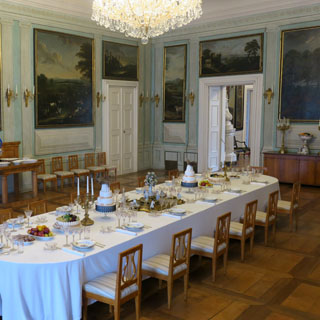
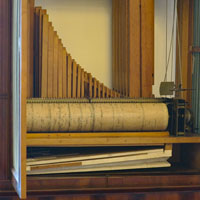
The castle and the interior are in the style of the Italian Renaissance, but the castle church is Baroque.

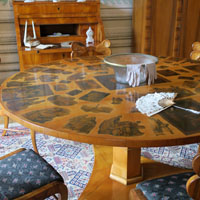
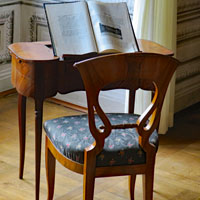
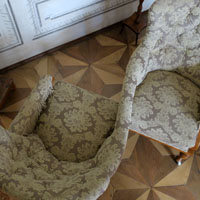
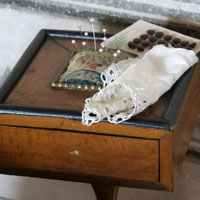
It takes two separate tours to see this entire floor (which I did).

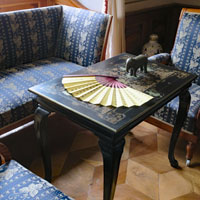
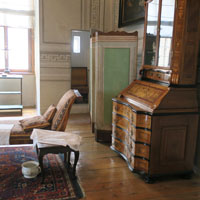

Bedřich Smetana was born and first learned music in Litomyšl. These are his rooms, although there are very few things here that belonged to him.
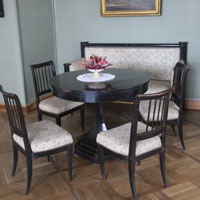
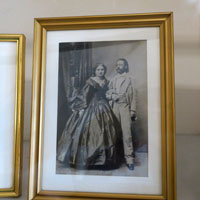
Of course, I'm having a koláč. I would have preferred a poppy seed, but I think you've got to get to the baker earlier in the day if you're going to be picky.

The cemetery. Naturally, I looked for the last name of my two ancestors who came from Bohemia (Kalal and Benda) but, didn't see any markers with those names.
In a small cafe at the end of the market square, this might have been my best dinner in the Czech Republic, and easily the least expensive.
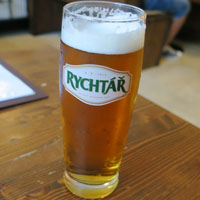
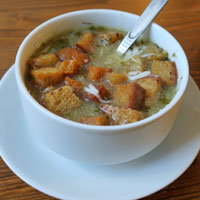
For my remaining days, I'd have perfect weather.
Habry. I need to spread open a map and figure out just where I'm going. Of course, it's nice to just wander, but eventually, you really need to make progress.
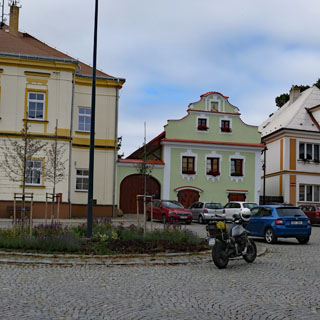
Ledeč nad Sázavou...
...is on the Sázava River.
I begin to dread these marked-out destinations. At times it seemed that all the roads were closed except the road back the way I had come. In this case, I don't want to go to Brno, so I'll need to figure out something. It'll be much worse in Germany.
Březnice.
Are we looking at carrots, or could it be something else? I didn't pull one up to find out.
Narrow smooth and no traffic. It's just what I'm looking for.
Nepomuk, Czech Republic.
Once more, I'm in the attic. Do you see that interesting round window, below? That's my room. No; I did not succeed in avoiding hitting my head on a beam.

It's not every hotel that has a theater, but this hotel has been around for a long time. For the time being, this is the breakfast room.
Saint John of Nepomuk (c. 1345 – 20 March 1393) is
the saint of Bohemia who was drowned in the Vltava river at the behest of
Wenceslaus, King of the Romans and King of Bohemia. Later accounts state
that he was the confessor of the queen of Bohemia and refused to divulge the
secrets of the confessional. On the basis of this account, John of Nepomuk
is considered the first martyr of the Seal of the Confessional, a patron
against calumnies and, because of the manner of his death, a protector from
floods and drowning.
--Wikipedia




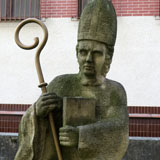


The church is on the foundation of Saint John of Nepomuk's birthplace.

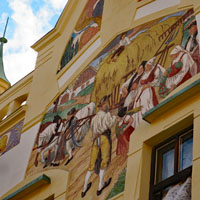
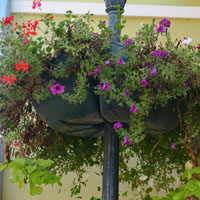
Dinner at an outside table. That's an egg, and those are rather interesting dumplings; don't ask what else is there, but it was all good. The beer is Pilsner, of course (I'm not sure anything else is even available).

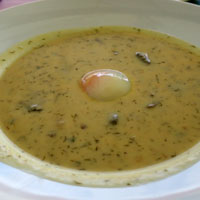
The Czech Republic is an amazing place to ride. The roads are almost universally excellent, the towns are clean and the food is terrific. This is my third time crossing the country, and it's been the same each time.
Měcholupy, Czech Republic.
 Germany
Germany
Rapeseed or any number of variations. And, corn. It's funny; both these crops might be destined for a fuel tank (diesel for one and gasoline for the other) and not a table.
Kelheimwinzer.
Miles and miles of hops. At least, I'm quite sure that this crop is not destined for a fuel tank.
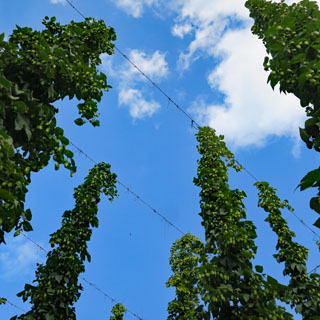
Augsburg, Germany.
I'm at the top, but it's not the attic this time.
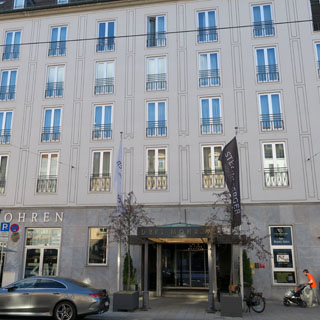
After Neuss and Trier, Augsburg is Germany's third oldest city, founded in 15 BC by the Romans as Augusta Vindelicorum, named after the Roman emperor Augustus. It was a Free Imperial City from 1276 to 1803 and the home of the patrician Fugger and Welser families that dominated European banking in the 16th century. The city played a leading role in the Reformation as the site of the 1530 Augsburg Confession and 1555 Peace of Augsburg.
--Wikipedia
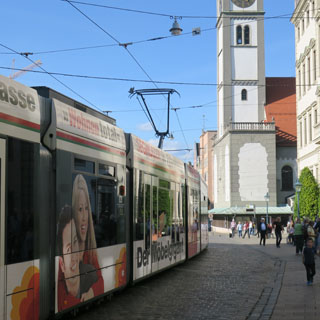
Dom Mariä Heimsuchung (Cathedral of Augsburg), built 1065.
I think people will far sooner donate funds for a second organ (perhaps not even wanted) before donating money to upgrade the plumbing
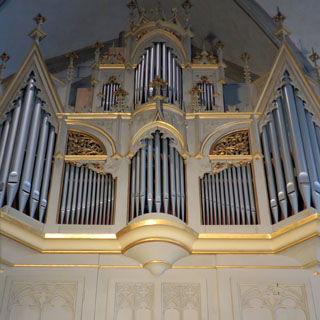

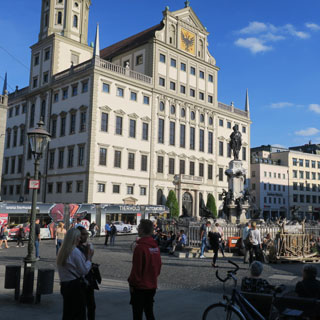
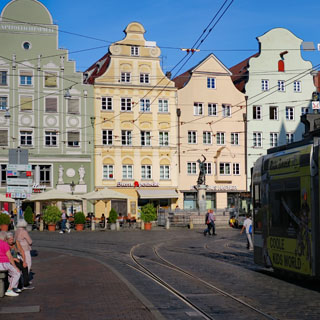
The Evangelical Church of St. Ulrich (foreground, Lutheran) and the Basilica of St. Ulrich und Afra (background, Roman Catholic). This unusual pairing was part of the Peace of Westphalia of 1648, which ended the Thirty Years War (where some twenty percent of the German population was killed).
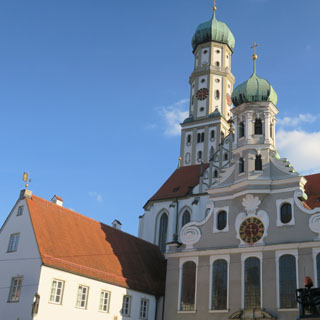
I'm sure I didn't order that plate of fries, although I did order the sausages and the dumpling soup. Perhaps the waitress just thought "I've no idea what he wants; I'll just bring this."
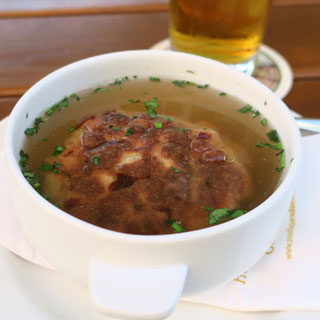
The V85TT doesn't hold much oil, so I was watching it every morning. The level had reached the lower mark, so I needed to top it up. There's a Guzzi dealer not far south, so I stopped at Finkl's Erlebnis Motorrad GmbH in Königsbrunn to buy a liter of 10W60. I used just half the bottle, so gave the parts guy the rest. At $20 per liter, it's not a trivial thing.
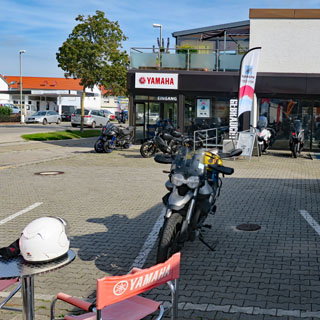
Church of St. Stephan, Kammeltal, Germany.
Ettenbeuren.
One more thing. The side stand of the V85TT incorporates a shield from the exhaust. The trouble is that this mousetrap assembly also tries to capture the heel of your boot, which isn't what you want.
Heidengraben.
Heidengraben ("pagans' moat") is the name given to the remains of a large Celtic fortified settlement (oppidum) dating to the Iron Age, located on the plateau of the Swabian Jura (Schwäbische Alb) in the districts of Reutlingen and Esslingen in Baden-Württemberg, Germany. The settlement was in use from about the late 2nd century BC to the early 1st century BC. By surface area, Heidengraben is the largest oppidum in all of mainland Europe.
--Wikipedia
Hohenneuffen Castle, built around 1100.
Hechingen-Stein, Roman villa ruins. These ruins were only recently discovered (post war), but the thinking of archeologists has changed quite a bit since then. Today, I don't know that anybody would rebuild on top of ancient Roman ruins, even if the result is pretty interesting and quite helpful in seeing how things once might have been.
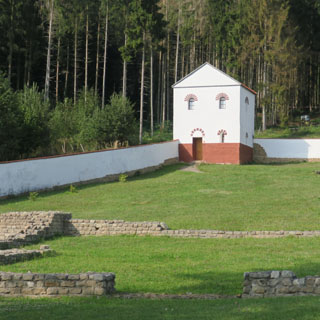
We're just at the northern limits of the Roman territory in today's Germany.
The aerial view shows what it is, today, and the scale-model gives an idea of what it might have once been.
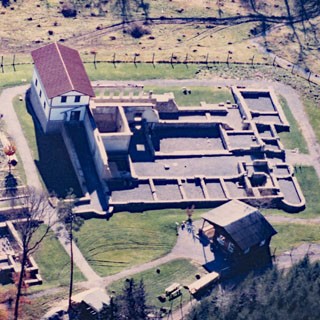
The baths. I recognize this from the ruins along Hadrian's Wall in Great Britain.
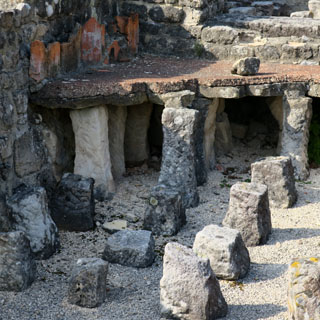

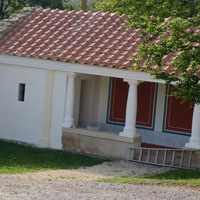
Things found in addition to bits of the actual colors that things once were. This helps the reconstruction to be as accurate as can be known.

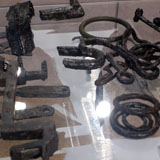
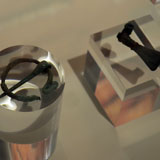
Hohenzollern Castle. A castle of some sort has been here since the 11th century, however, this fanciful version dates from the mid-1800s.
The Haigerloch Castle dates from around 1200 and the town down below would have developed at the same time.
The castle is high on a steep hill, overlooking the river and the town. Today, the castle is a remarkable hotel. And yes; I'm in the attic, again (the far left window, lower right photo)
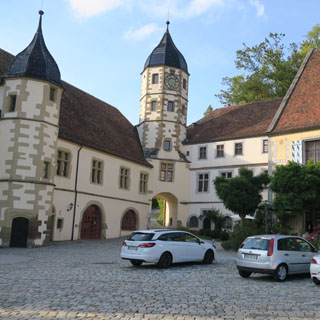
There are quite a few stairs if you want to walk down to the town.

Schlosskirche (1584).
On my return up the stairs after walking through the town early in the morning, I followed the priest, who unlocked the door to the castle church. Wow!
The view looking up.
This is a famous and busy (with motorcycles) riding area in southern Germany. The photo is one of the more boring bits.
 Switzerland
Switzerland
Romanshorn, Switzerland. You might guess that this town on Lake Constance was founded by Romans, but it actually dates from the 7th century.

In the valley of the Rheine River, riding south.
This time there is no question as to the crop. Carrots. Yes; I put this one back in the ground (I hope I didn't kill it).
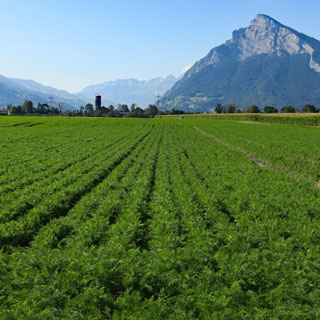
Chur, Switzerland. It's a place I've stayed at several times and it's a nice town to spend the night before returning to Italy.
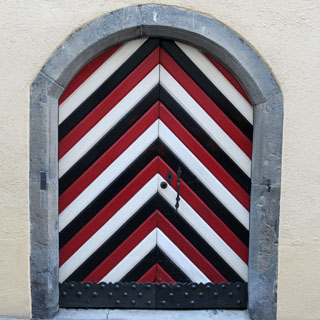
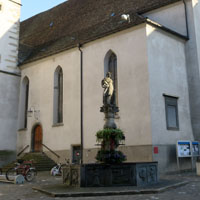

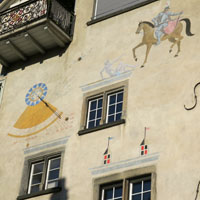
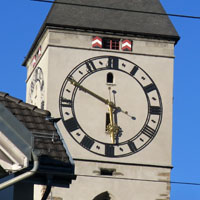
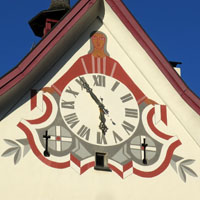
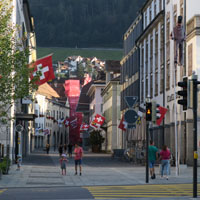
A Redwood tree grows in Chur? Yes, it does. Several, in fact.
The view from Brienz to Tiefencastel, across the valley. I've been on all the passes into Italy, but I've not been on this one for several years.
Following the Albula River. What a crazy place for a road. But, even more so that there's also a railroad that comes through (often inside the mountain).
Albulapass.
The view south towards Italy, but, there's still one more pass to go.
Berninapass.
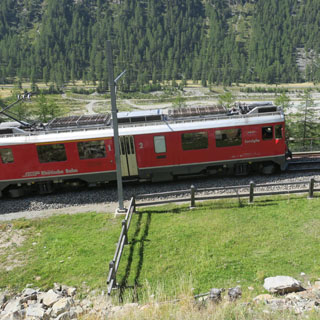
Bernina Pass takes me into Tirano and then to Sondrio and finally Mandello del Lario
 Italy
Italy
Mandello del Lario and Lake Como (or Lario as it would be called here).
Each flavor is also labeled with a Moto Guzzi model. I had "Stelvio" (Fragola) and "V85" (Caramello Salato) and "Otto Cilindri" (Grignetta) in a waffle cone.
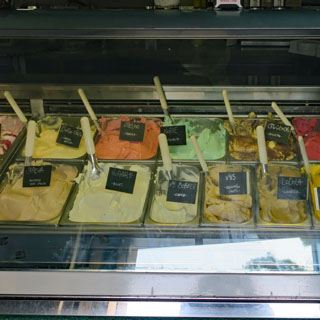
My room is on the third level.
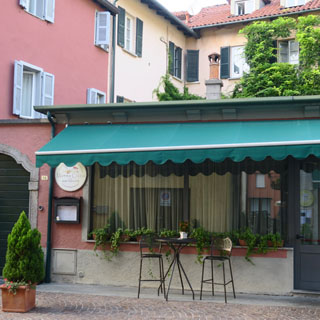
Where all birds are welcomed and given fresh drinking water.
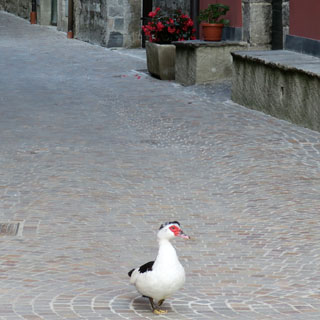
The next morning I'll take the train back to Lecco and then Milano.
Milano.
The Palazzo Reale (Royal Palace) has revolving art exhibits (usual three at a time) so there's always something new. This is an exhibit on the Raphaelite Brotherhood, which was largely put together by the Tate Museum (of London).
It's always interesting to see paintings that are so famous, you forget that there even is an original. It's nice, too, when a museum allows photography.
Taking the Yellow Line back to my hotel.
Forget dinner; I think I'll just have bar food in my hotel. Buy a drink (a Spritz, naturally) and the good food just keeps coming from the kitchen. Meanwhile, there's a soccer game playing on the television and a local team is playing.
I don't know that I've seen the original "Sound of Music" since I saw it on first release in 1965. What's been on broadcast T.V. has been drastically edited for length. So, that's what I'll be watching on the long flight back to New Jersey.
Its nice to see the Alps once more.
An excellent trip. The goal was to see the High Tatras Mountains and they did not disappoint.

